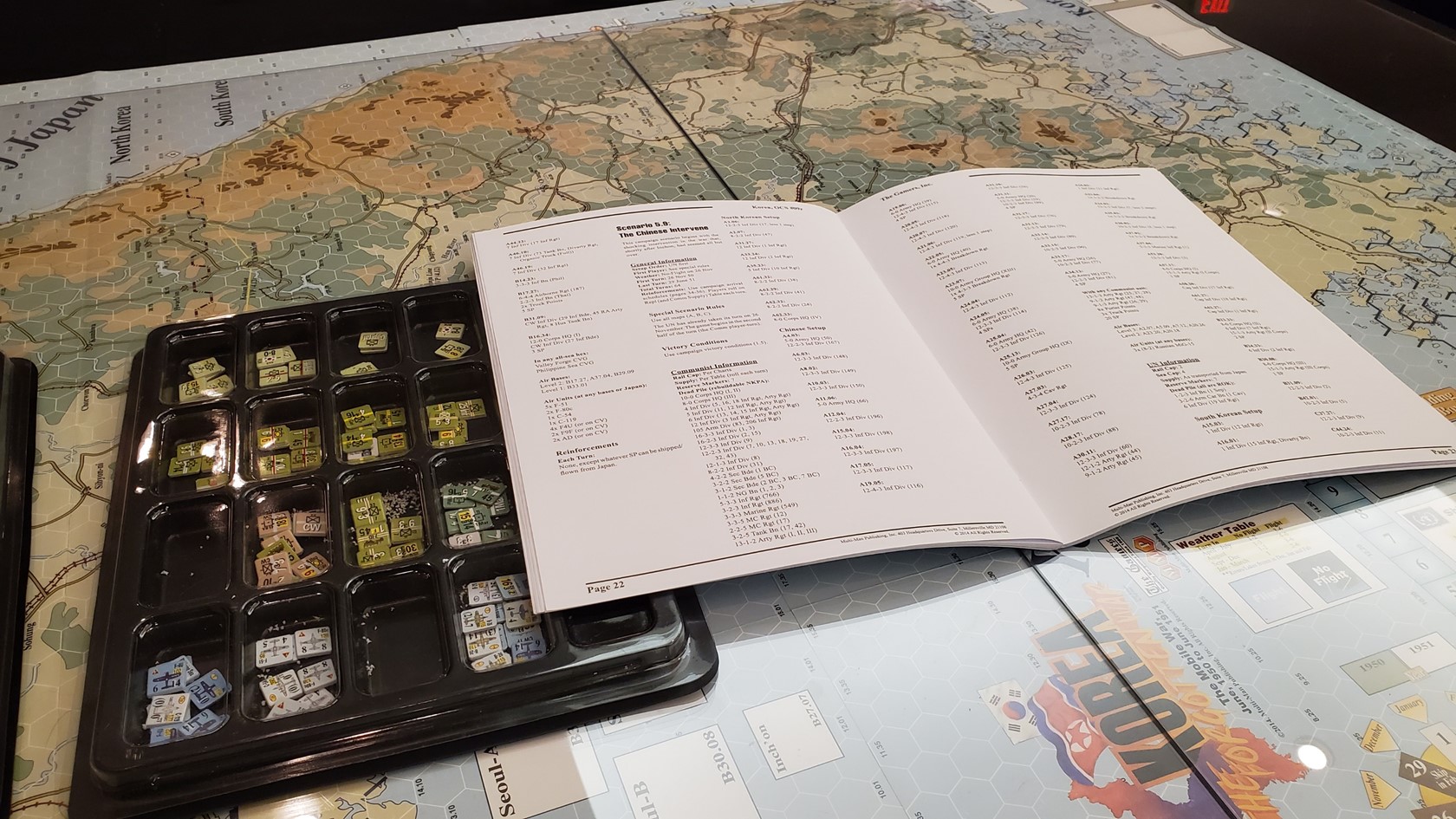
Opposed Game Play in Dallas.
Late November 1950. The Chinese are surprising the Allied forces who are glibly marching to their doom. US Army command has fractured and semblance of cohesion of the Joint Marine Army command near the Chosin Reservoir.
It is bitingly cold. It is winter, it is the ideal situation for the Chinese to surprise the Allies, who think that no Chinese are present, would not dare attack and would be repulsed with ease….Welcome to OCS Korea from Multi Man Publishing. The Operational Combat System [OCS] spans many topics. None perhaps so complete as this. An entire war! So lets roll some dice as the Chinese intervene in the US Policing Action.
On to turn 1.
Surprise is total and complete. The Marines bear the brunt of a savage opening barrage that totally annihilates the 5th Regiment. The only good news for the Yanks is that the Chinese cannot now advance into the hex as we are not doing the gamey empty hex combat b.s. [ok.. I know some folks like it. But my opponent and I do not]
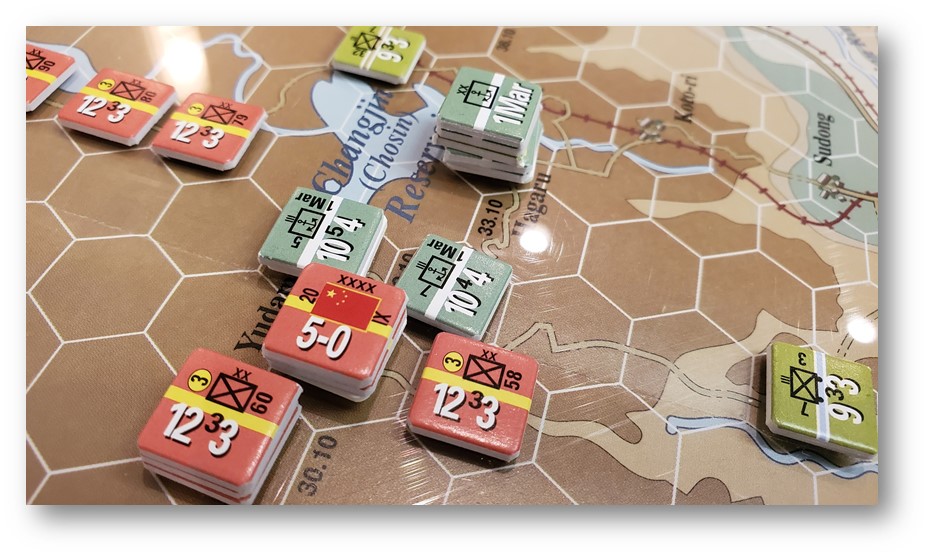
West and South the main assault begins, the gaps in the lines will be exploited! OR broken or punched thru! The big differences here are Chinese are large factor multi step units and mostly 4 AR or at worst 3 AR, but with glacial move rates.
While the Allies are SK- 2 and 3 rated AR, and soft. US forces are 3-4 rated and single step. But with higher speed on their move side [representing some higher level of motorization].
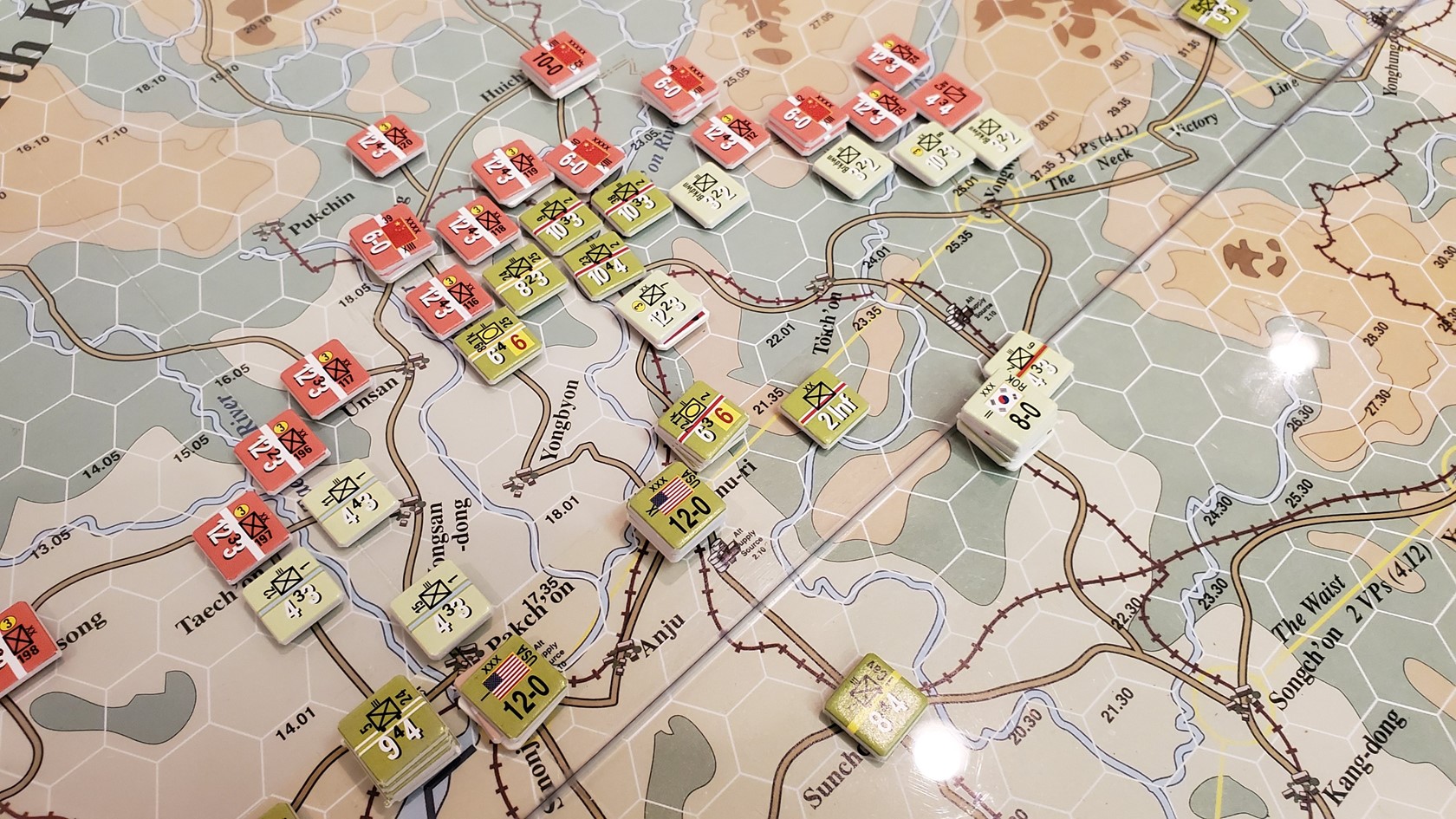
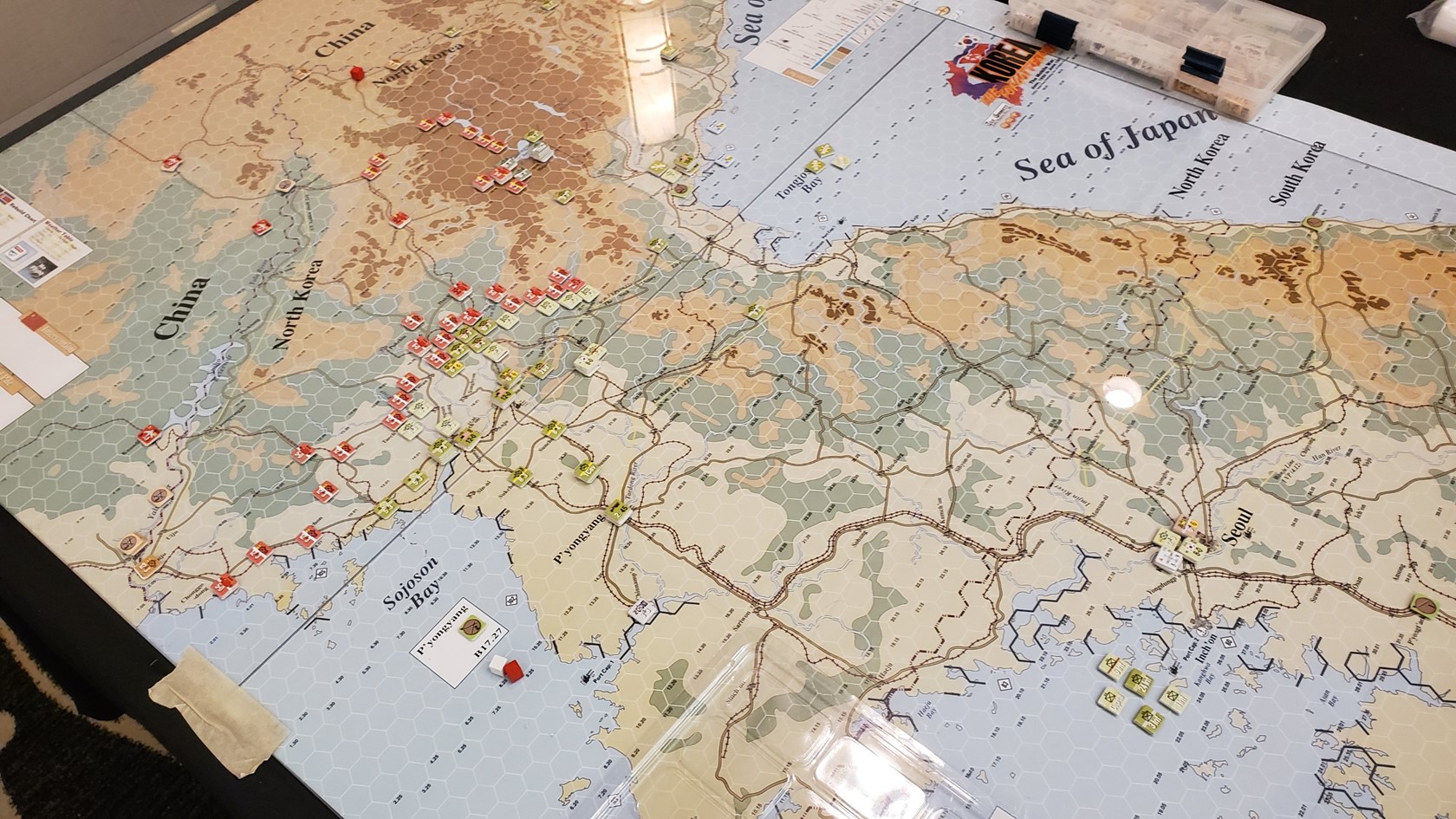
The Setup. Just above the ‘Neck’ of the Korean Peninsula and of course further North near the Chosin Dam.
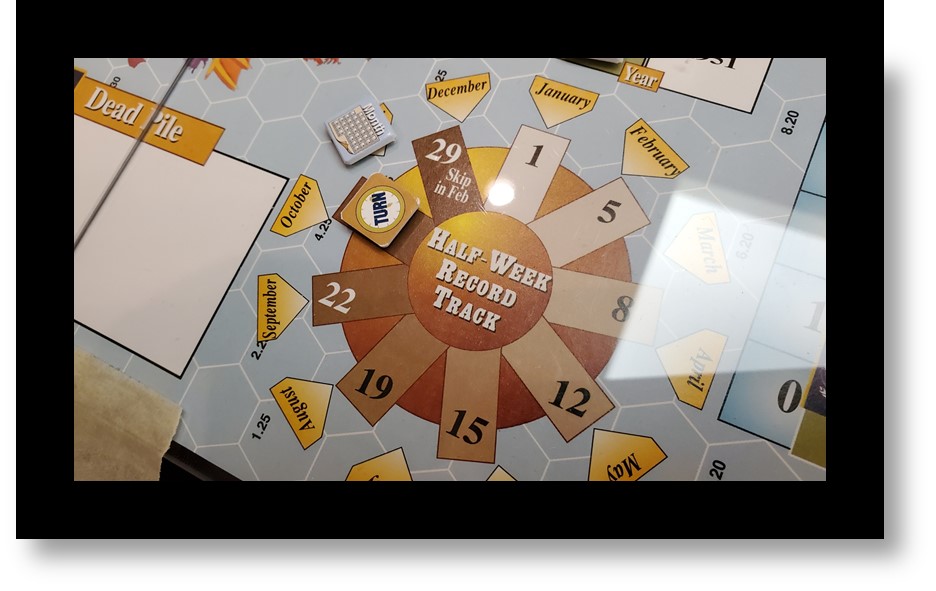
Start Date
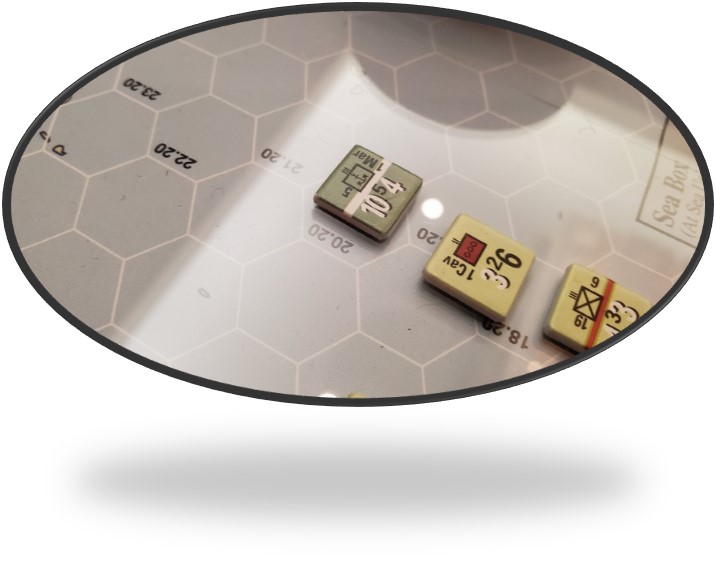
The first casualty of the war, 5/1 Marine.
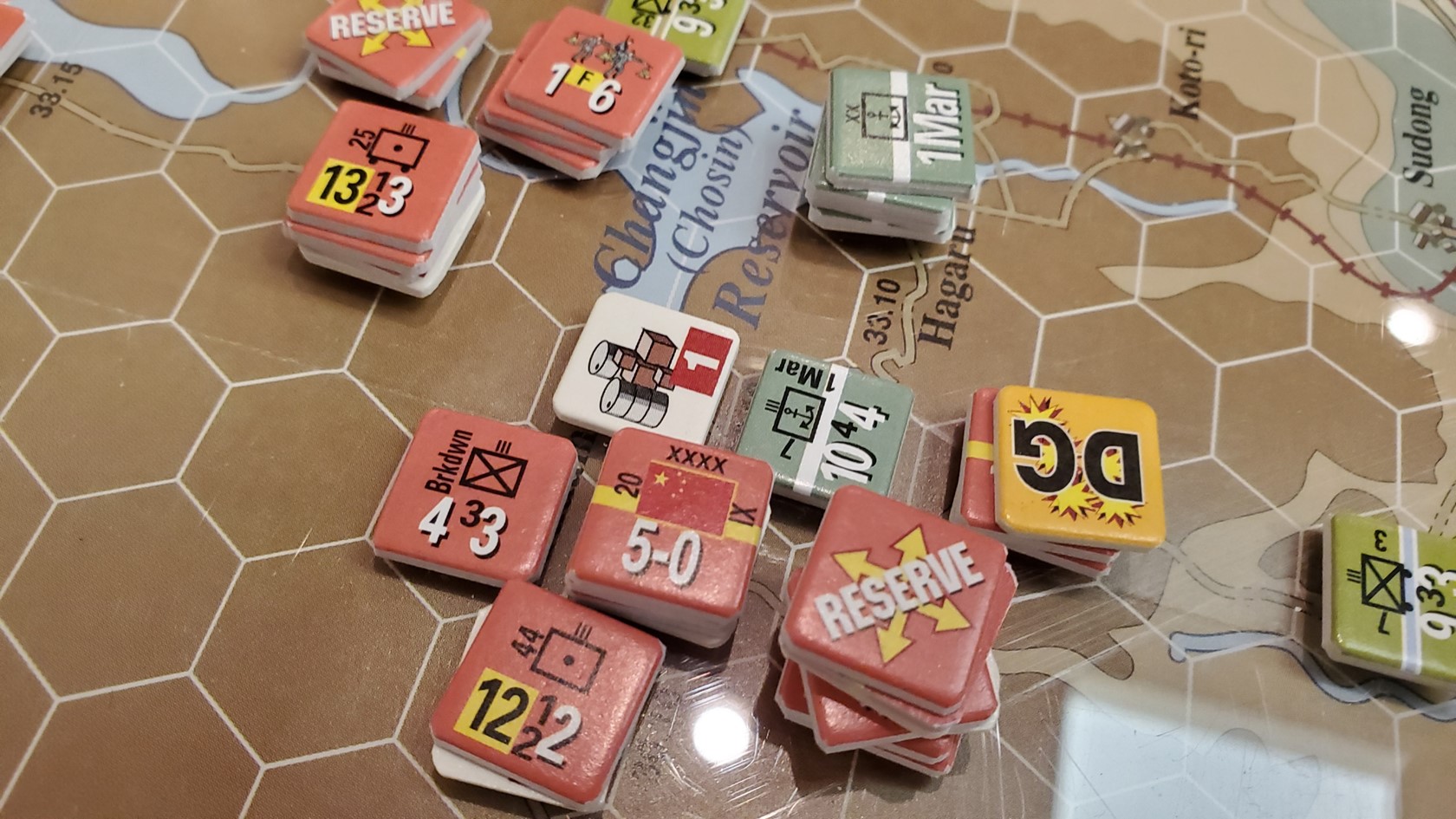
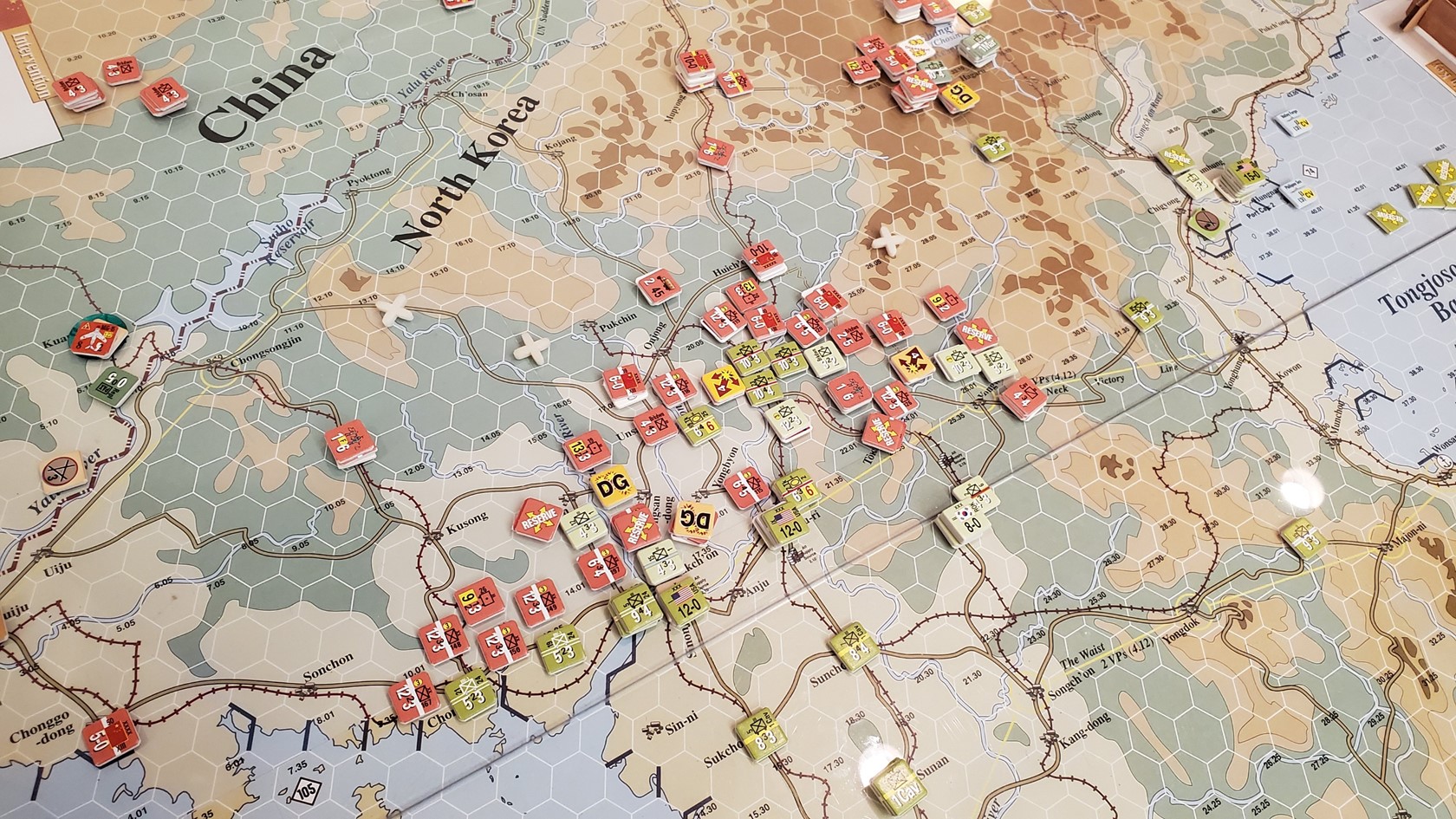
At the end of the first turn from left to right I neglected the rail road hex and missed isolating the units from 24th Division.
We make some fractured break throughs in the center near Yongbyon, with an attempt to force the retreat and or make fueling the 25th‘s tank Bn hard to extricate. While in the right we take porters with us, to keep us in supply next turn and force a general retreat or a costly [in supply terms] counter attack.
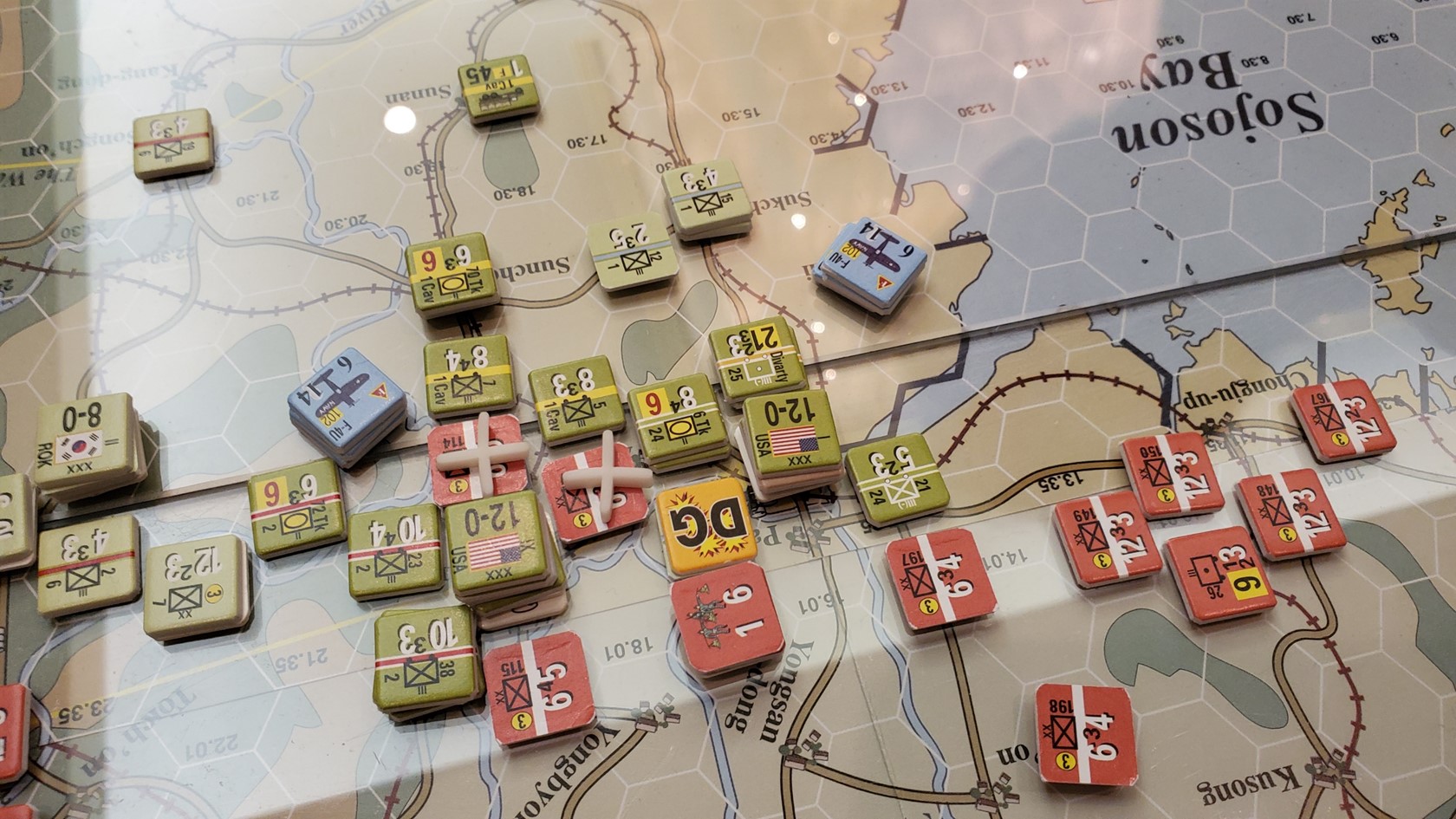
As the next turn unfolds, IX Corps is feeling the pressure of the Northern Winds! Aggressive Marine air comes to their aid. While ROK forces initiate a general withdrawal. I Corps is having similar troubles.
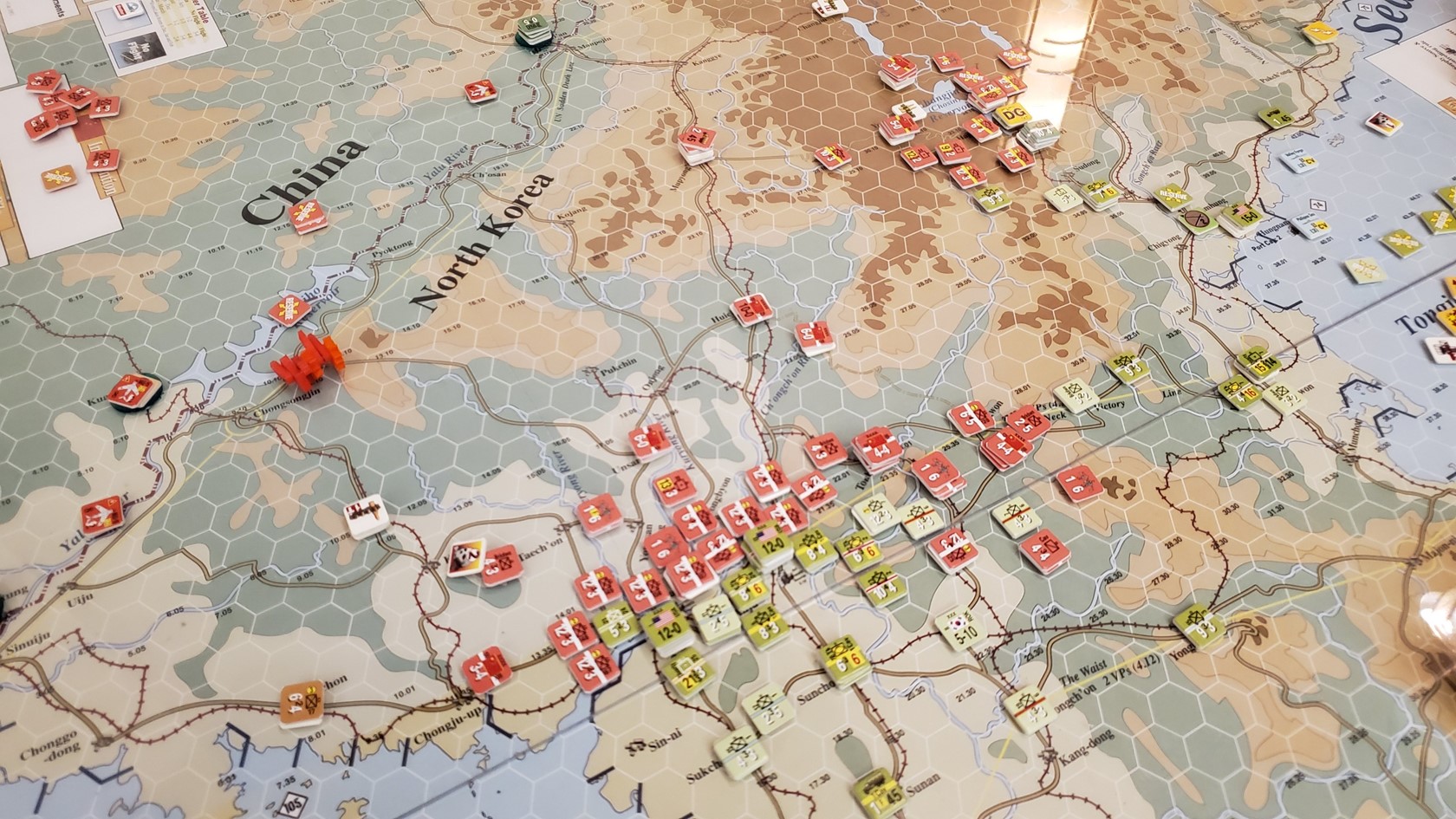
Turn three starts and the lines solidify. Chi-coms begin a line shift to the left like a Macedonian Phalanx drifting! They see a hinge on the Allied right and look to exploit it in the coming turn. But what about the Chosin Res?
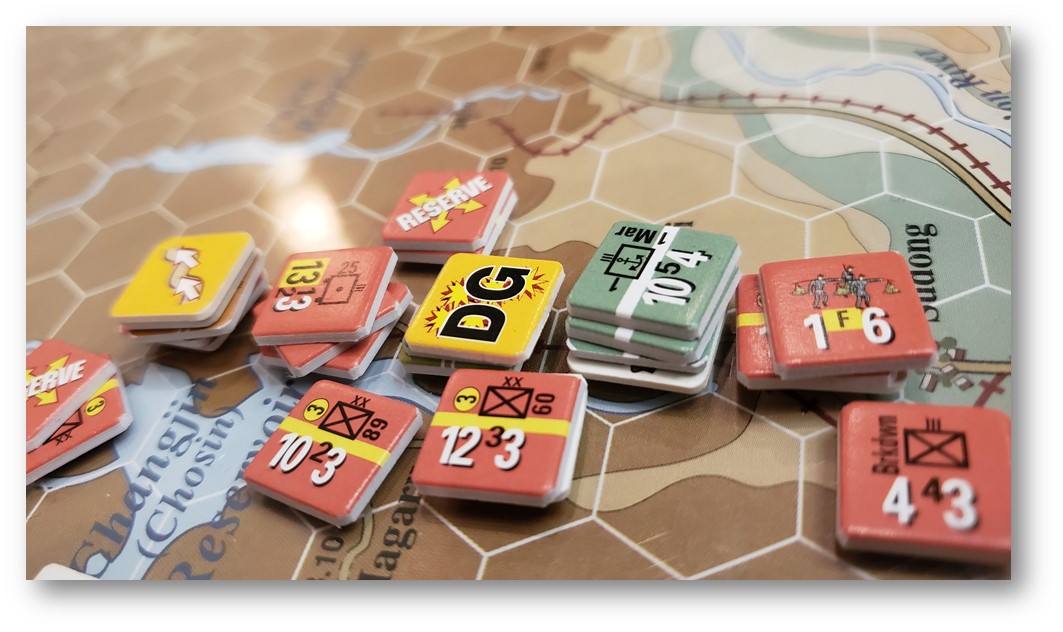
Yeah, its getting ugly, the Chinese are trying to isolate and block escape.
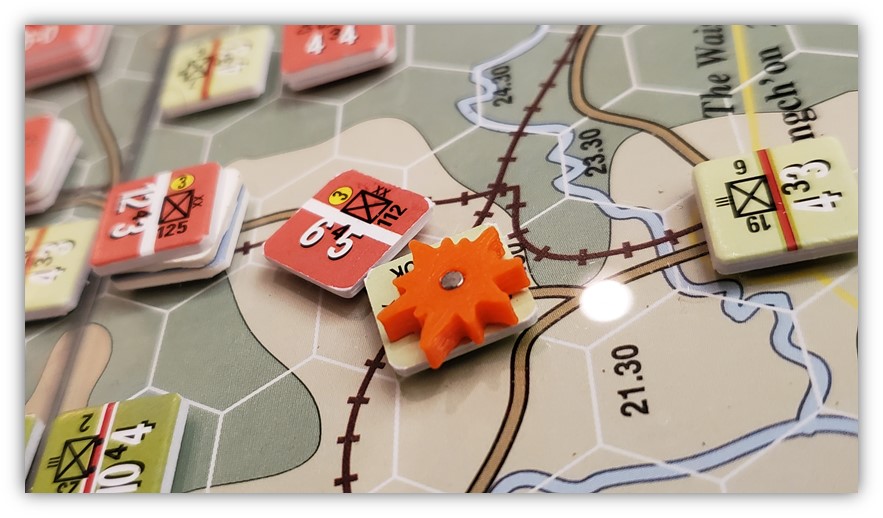
ROK forces now face mobile attacks by the Chinese 112th Division. Who swipe aside the enemy in an infantry over run.
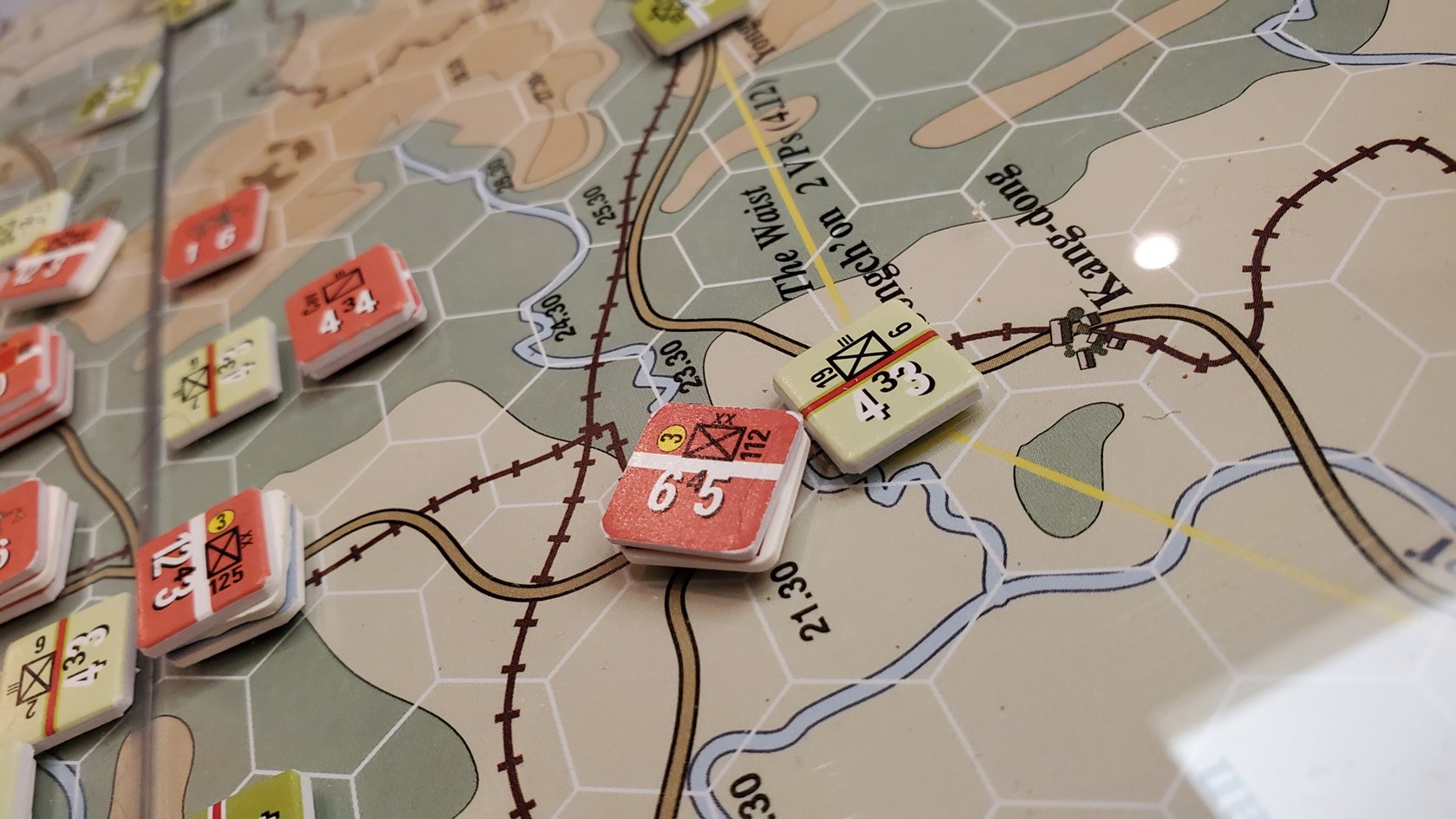
Follow on units release breakdowns, and push to cut off the Allies:
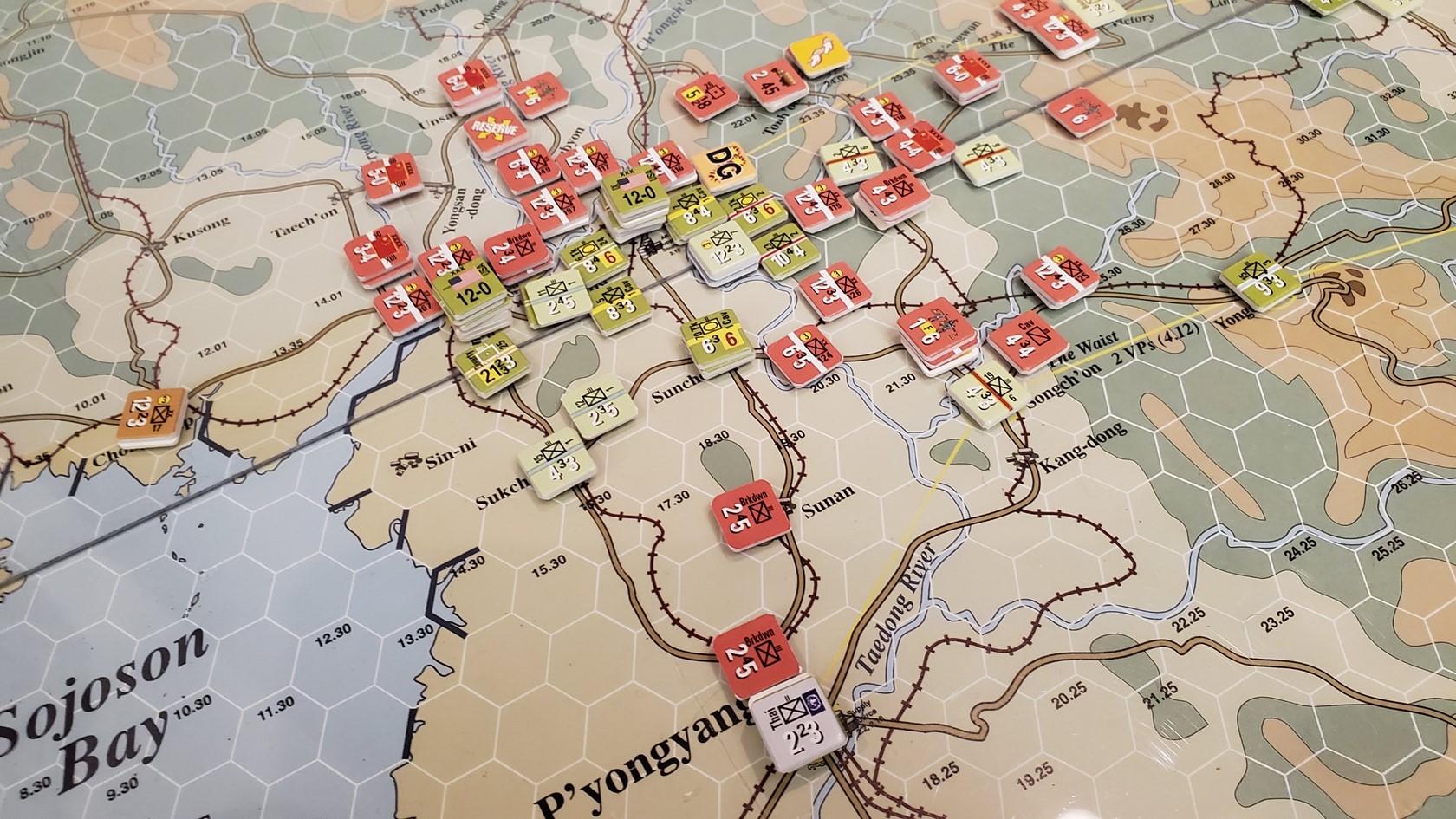
Those break downs use trace supply to the Porter units. One Regiment encounters the Thai Battalion holding P’yongyang. Wholesale retreat or reorganization to the rear is in order!
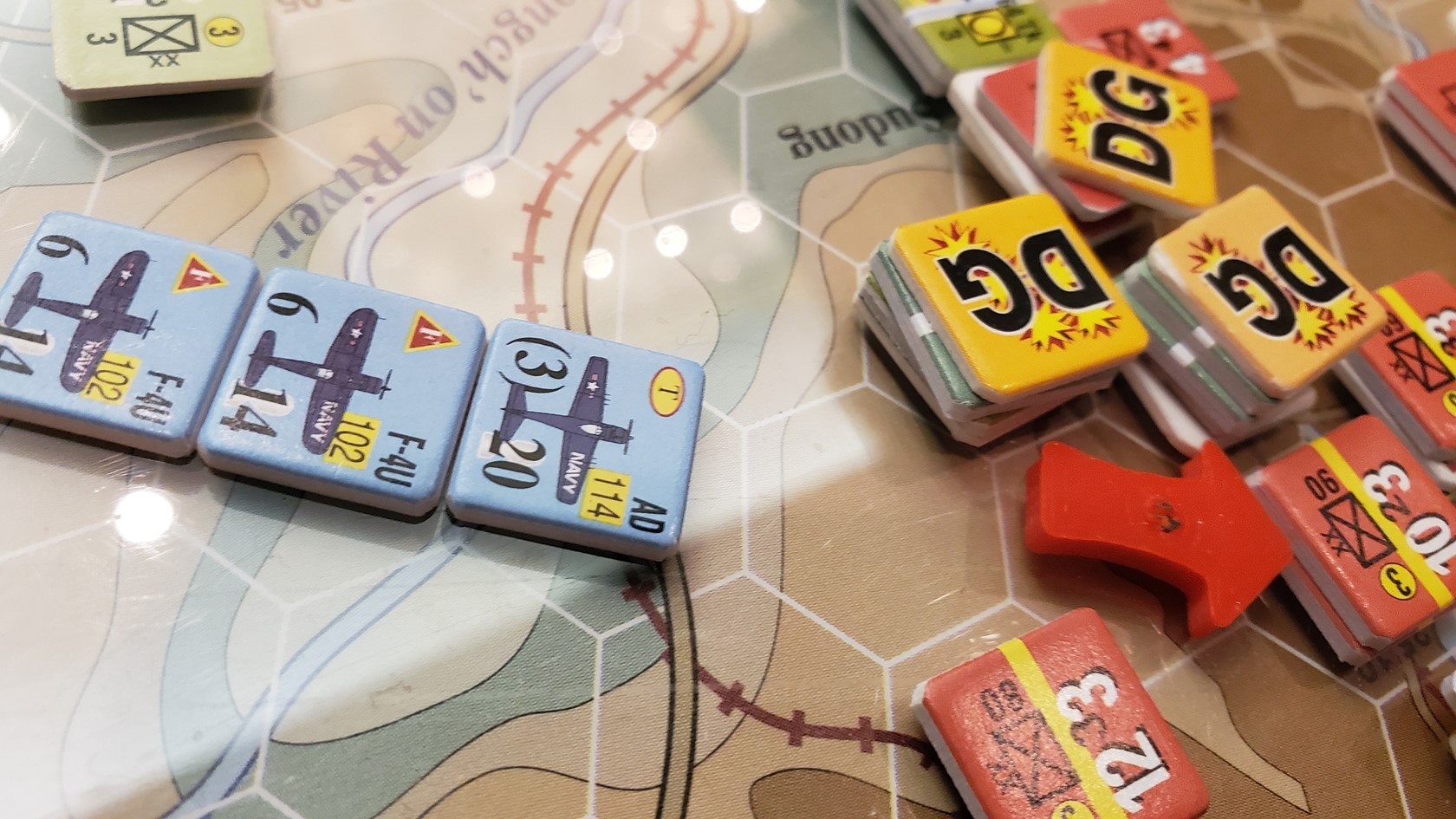
Once again the Navy Air force comes to the rescue with massive attacks on key locations to make path while some troops retreat others counter attack!
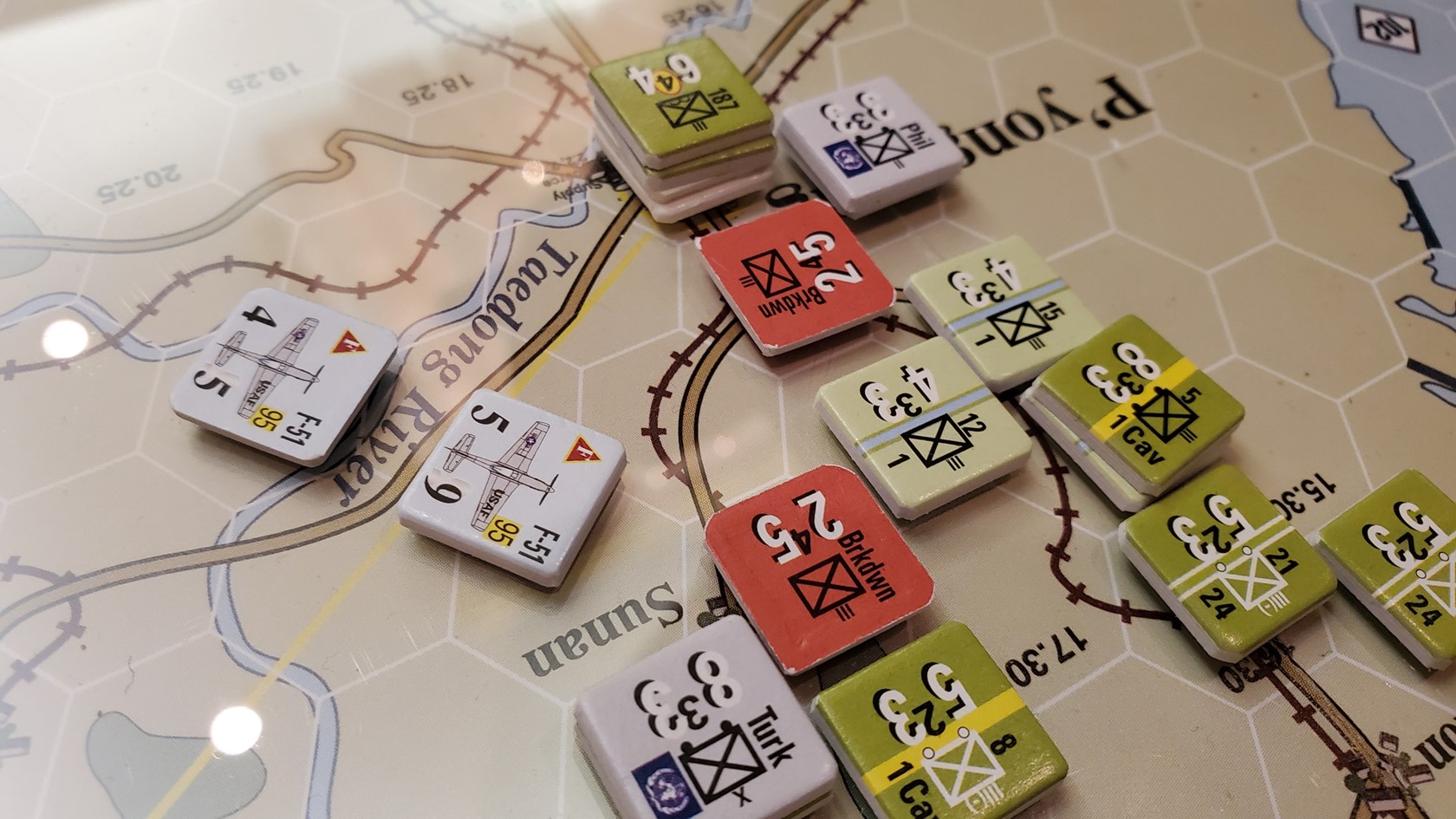
Sacrificial steps serve their purpose!
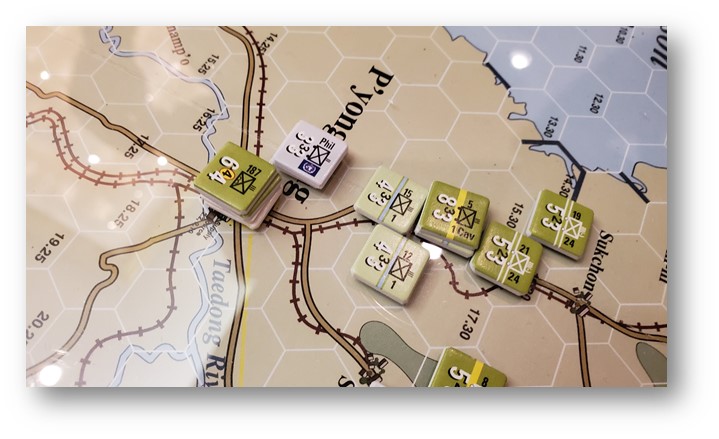
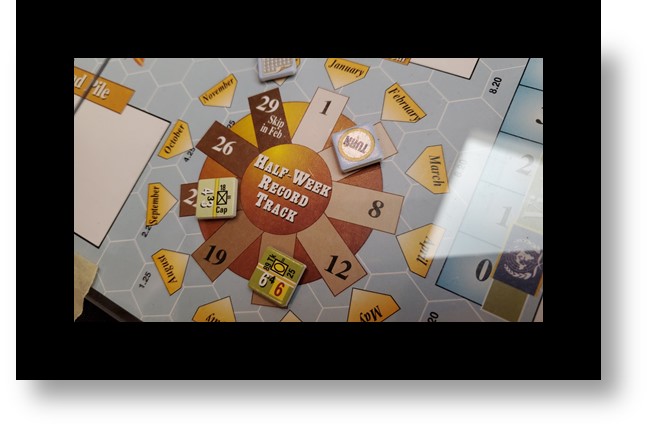
This turn see the Chinese adjust their swarming tactic, to a more linear approach and while the Allies retreat South the look to move in another unexpected direction.
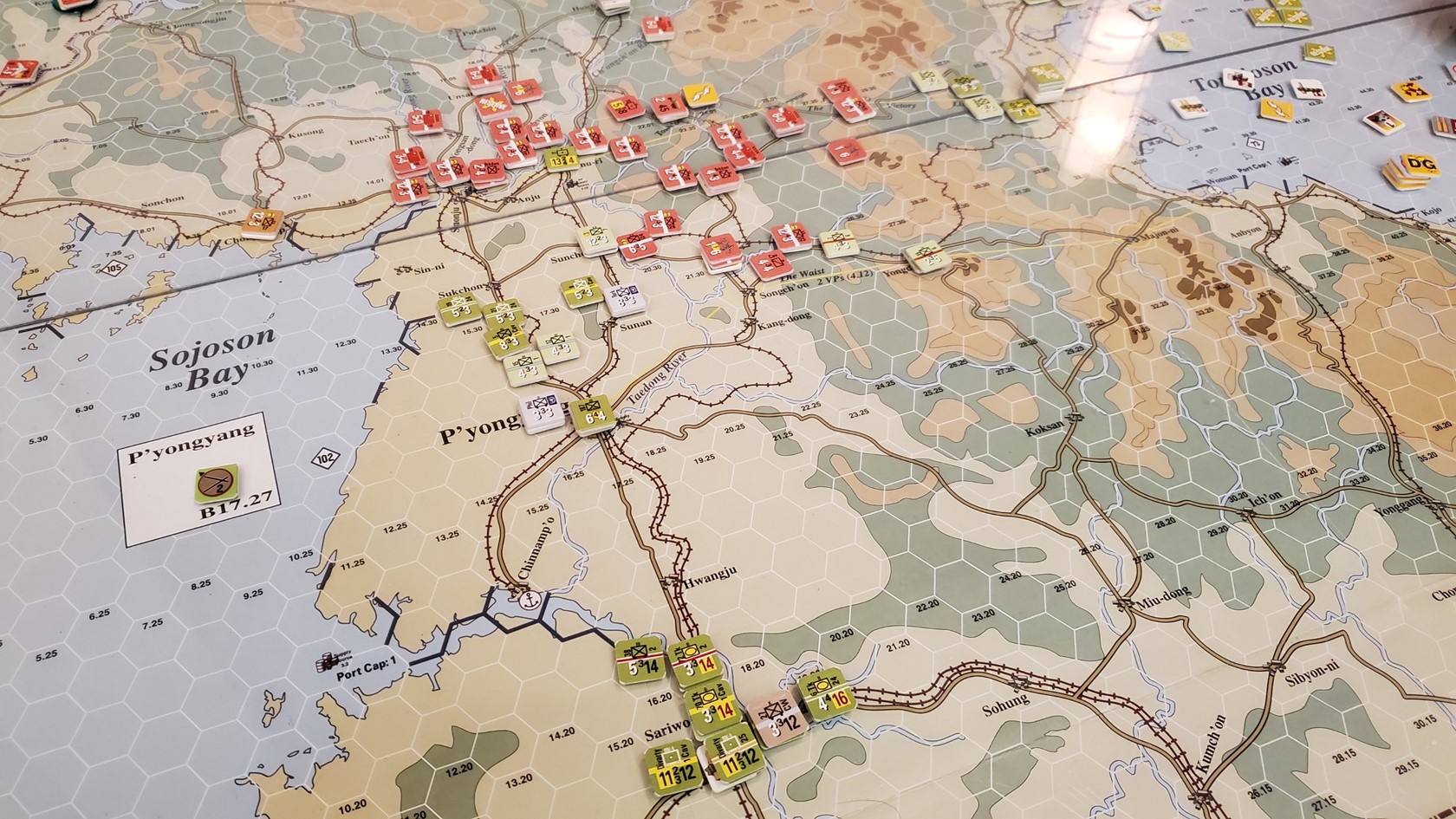
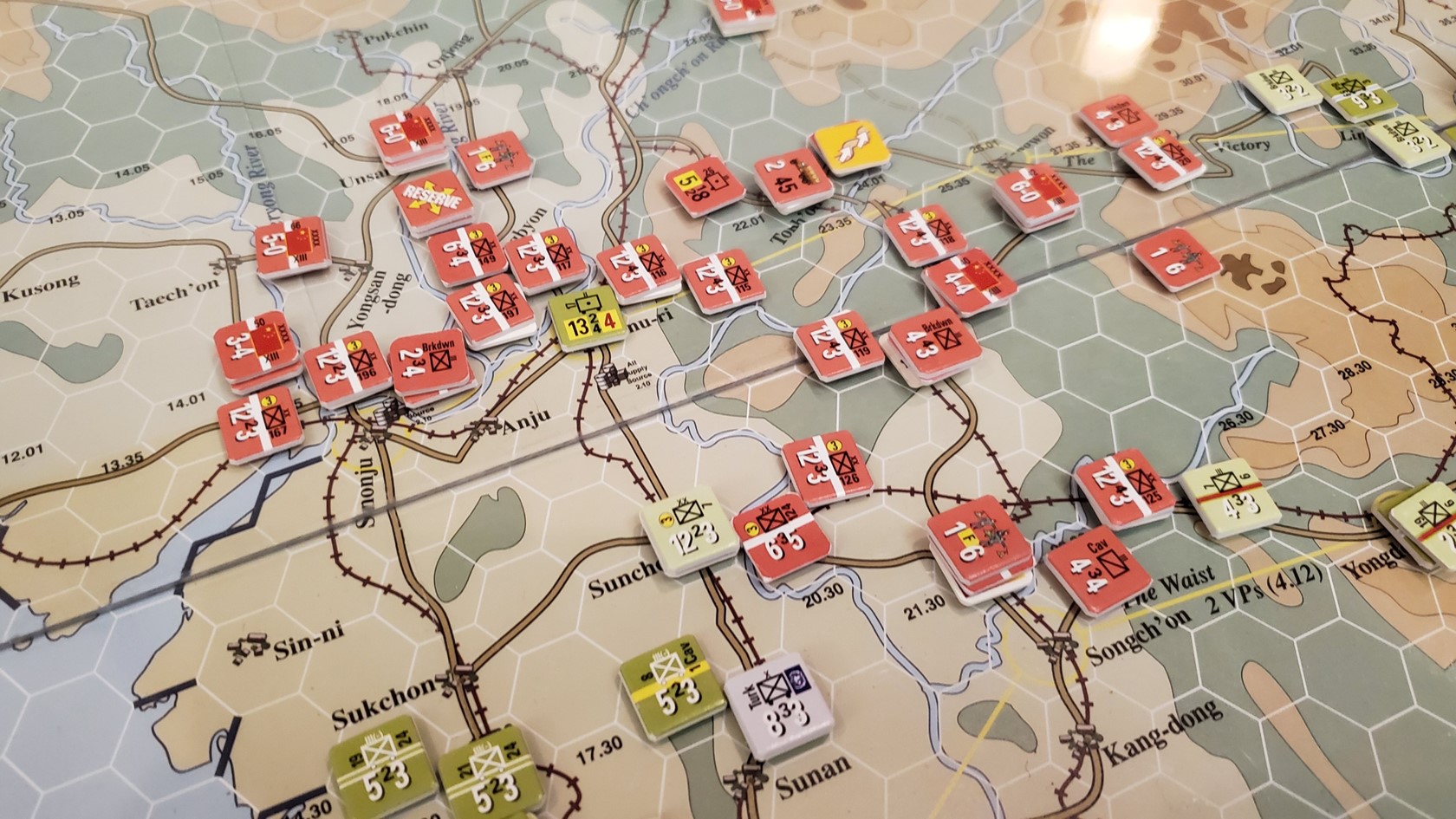
They lean towards the East while pressuring the main retreat. This does spread out the Chinese however.
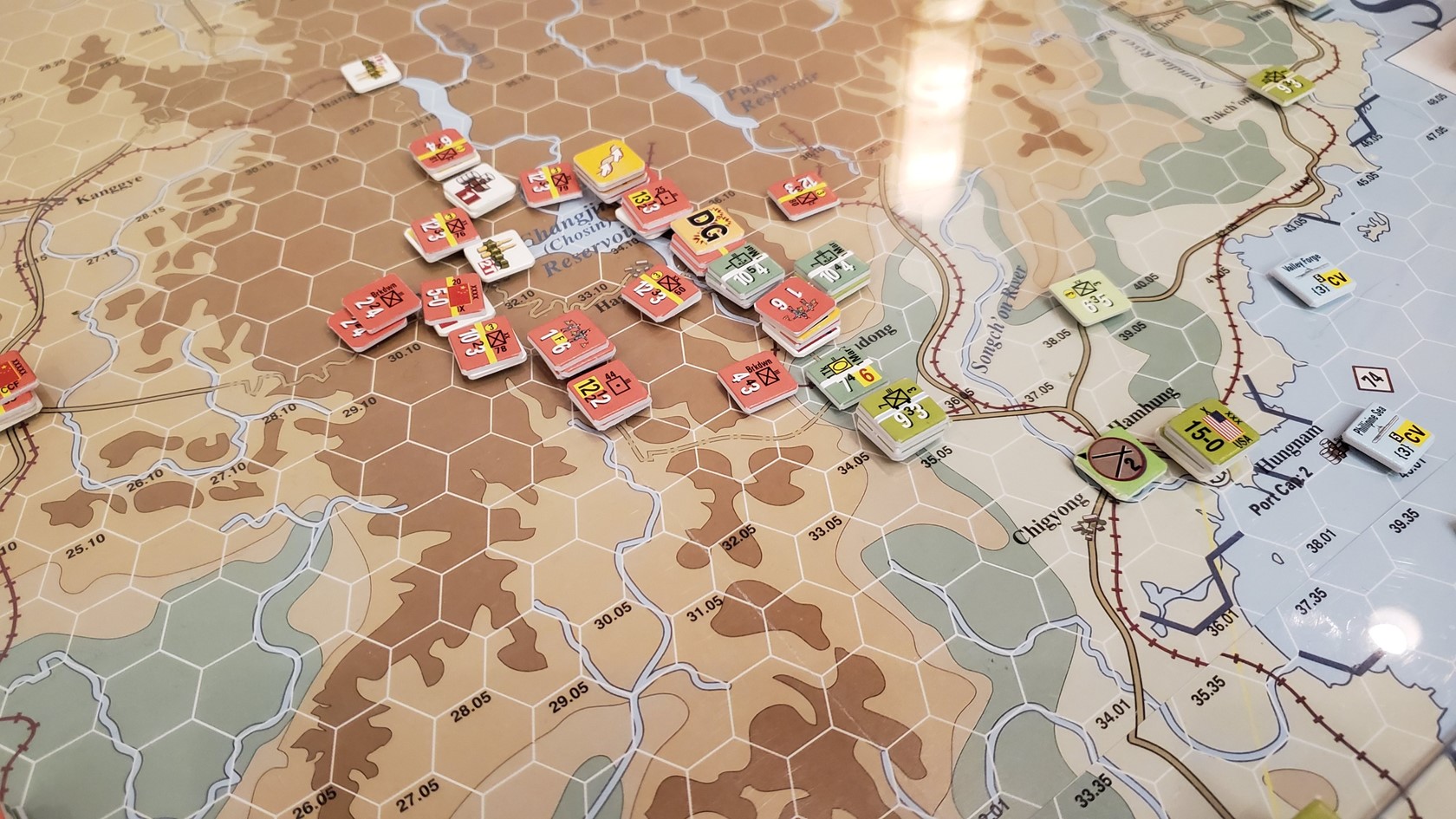
The Marines, having lingered too long are however hard to kill off. Several attacks are foiled by supply woes for the Chinese and by aggressive arty and Air support. Forces from Hungnam reinforce the road to Chosin, in an effort to aid the retreat and keep supply open.
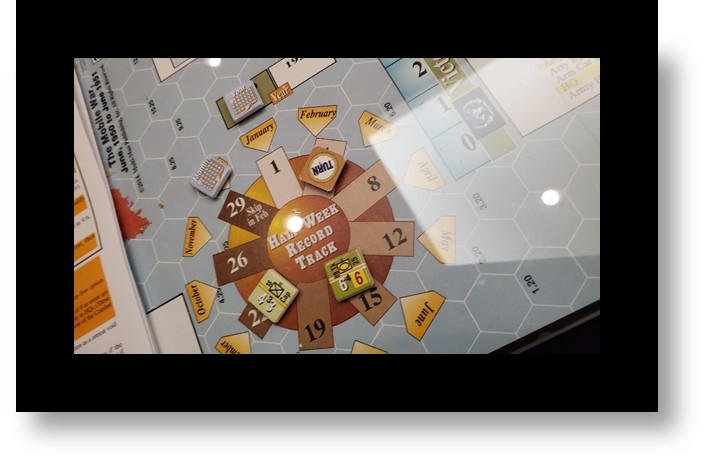
CCF Turn 4 provides a surprise for the Allied Nations.
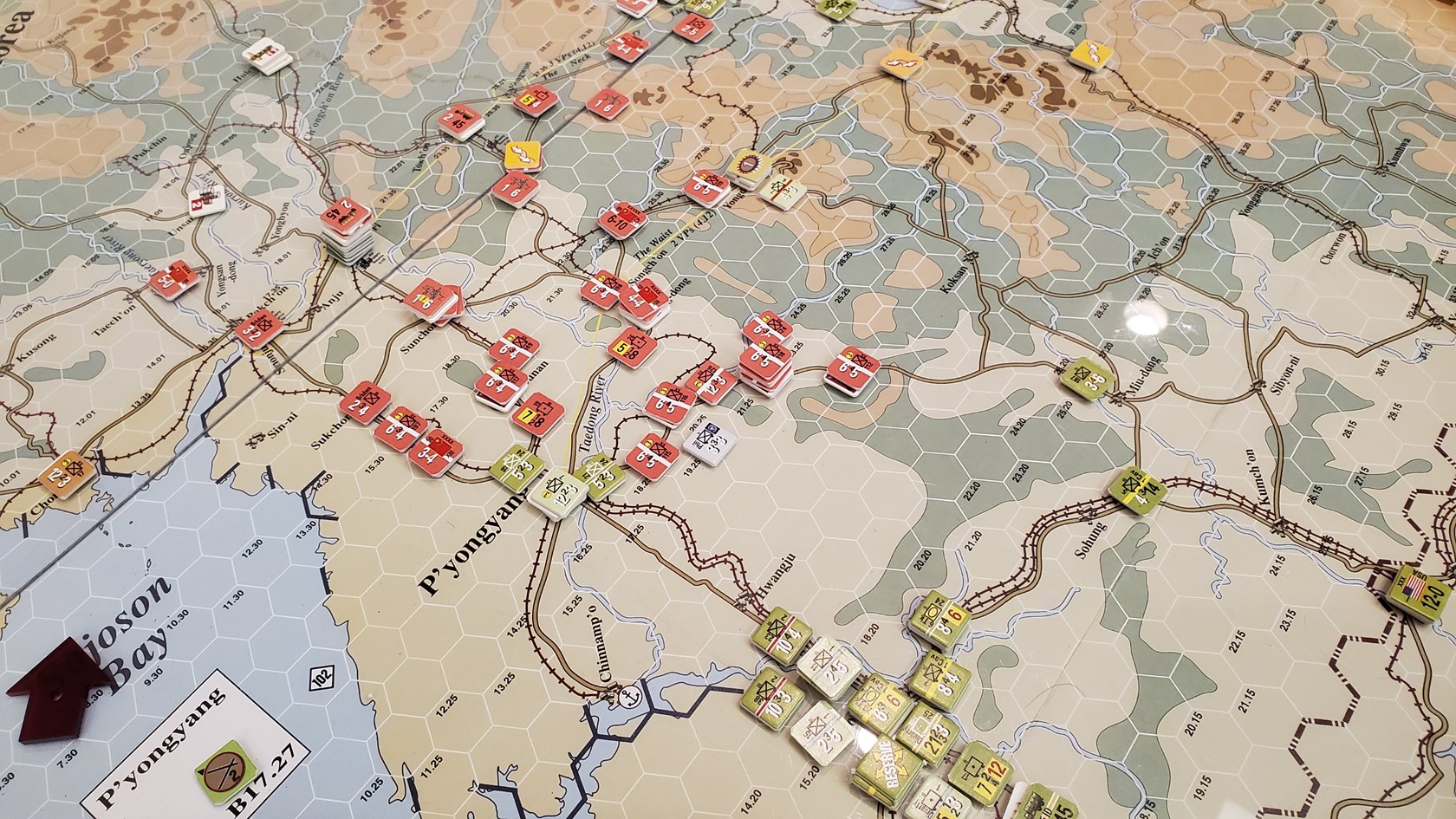
Chinese division move quickly but not after the Allies, rather more oblique to them. Seeking a route around them to Seoul! The road junctions of Koksan and Miu-dong are targets [See above]. Supply is now stretched thin, and the trucks work over time to get sustainment level support to the huge divisions. The Chinese do not need to attack, merely keep the Allies off balance.
Time for fighting will come. Some large barrages are used to soften up enemy forces or break down resistance, but little direct combat now takes place.
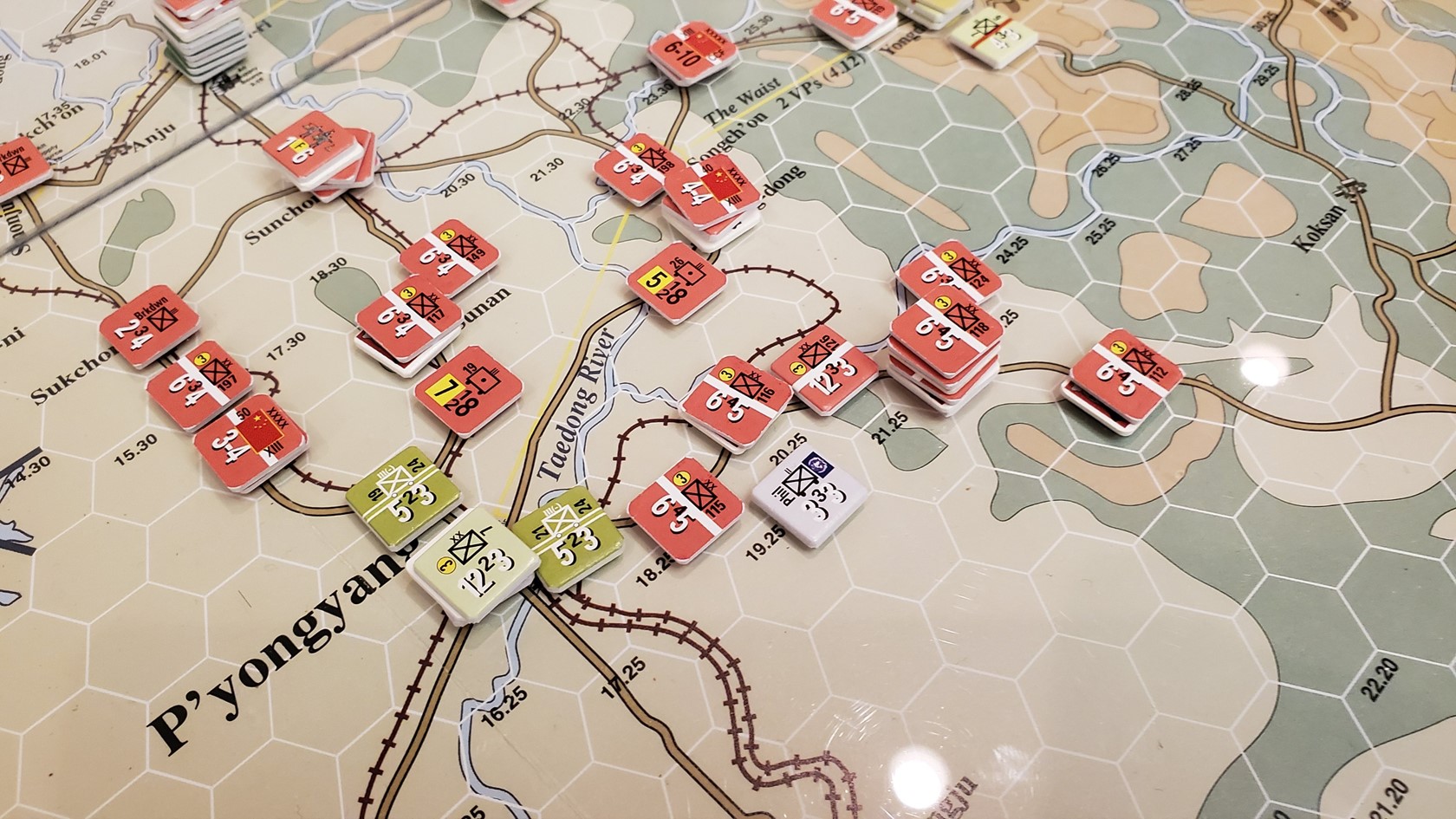
The screening force at Pyongyang watches Chinese cross the Taedong River easily as it is indeed frozen.
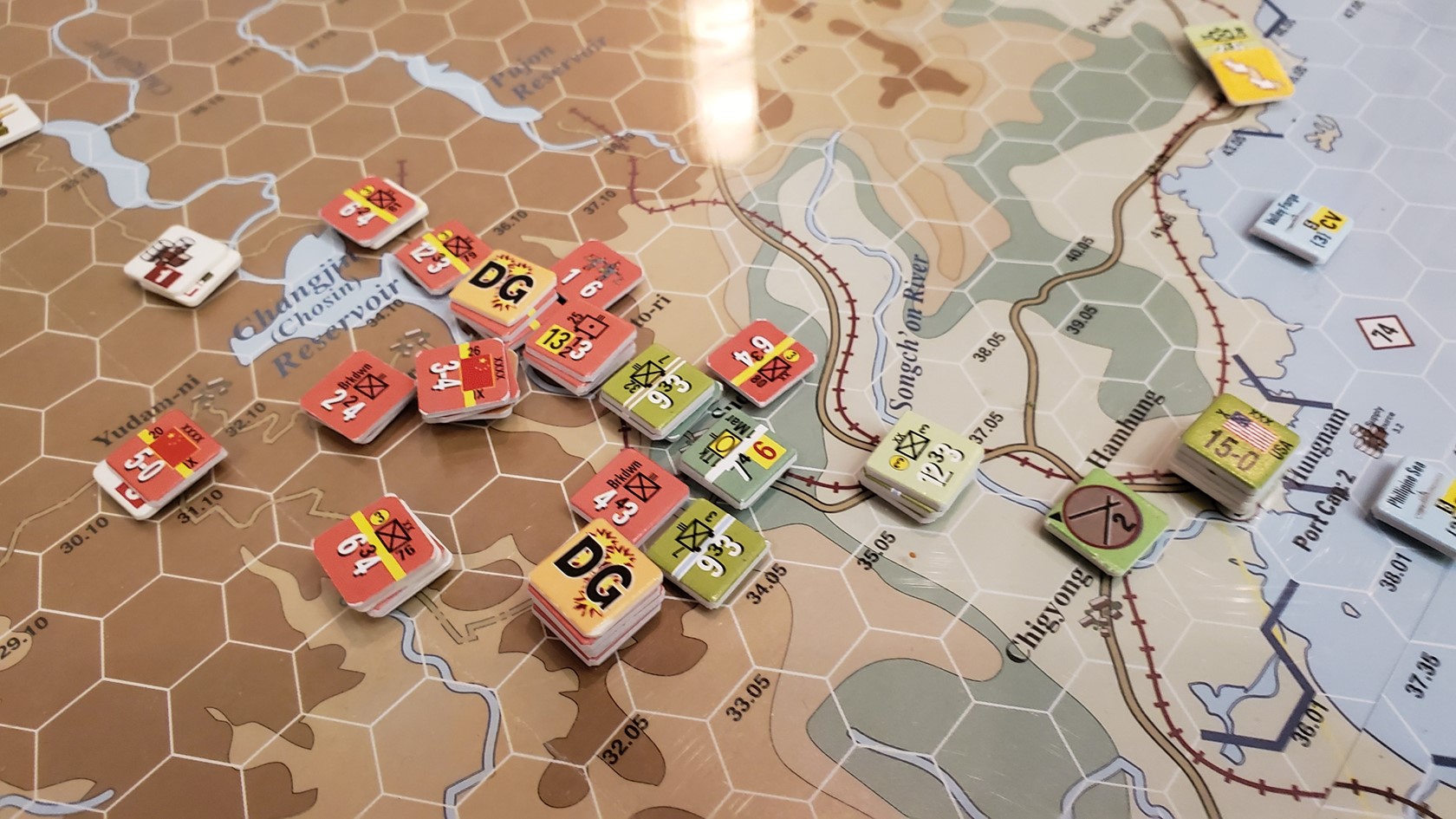
China keeps up the pressure on the Chosin, attacking with huge multi division stacks, paying heavily in t’ and losses in combat. The 80th Division will be OOS, this is an error and they move back one hex.
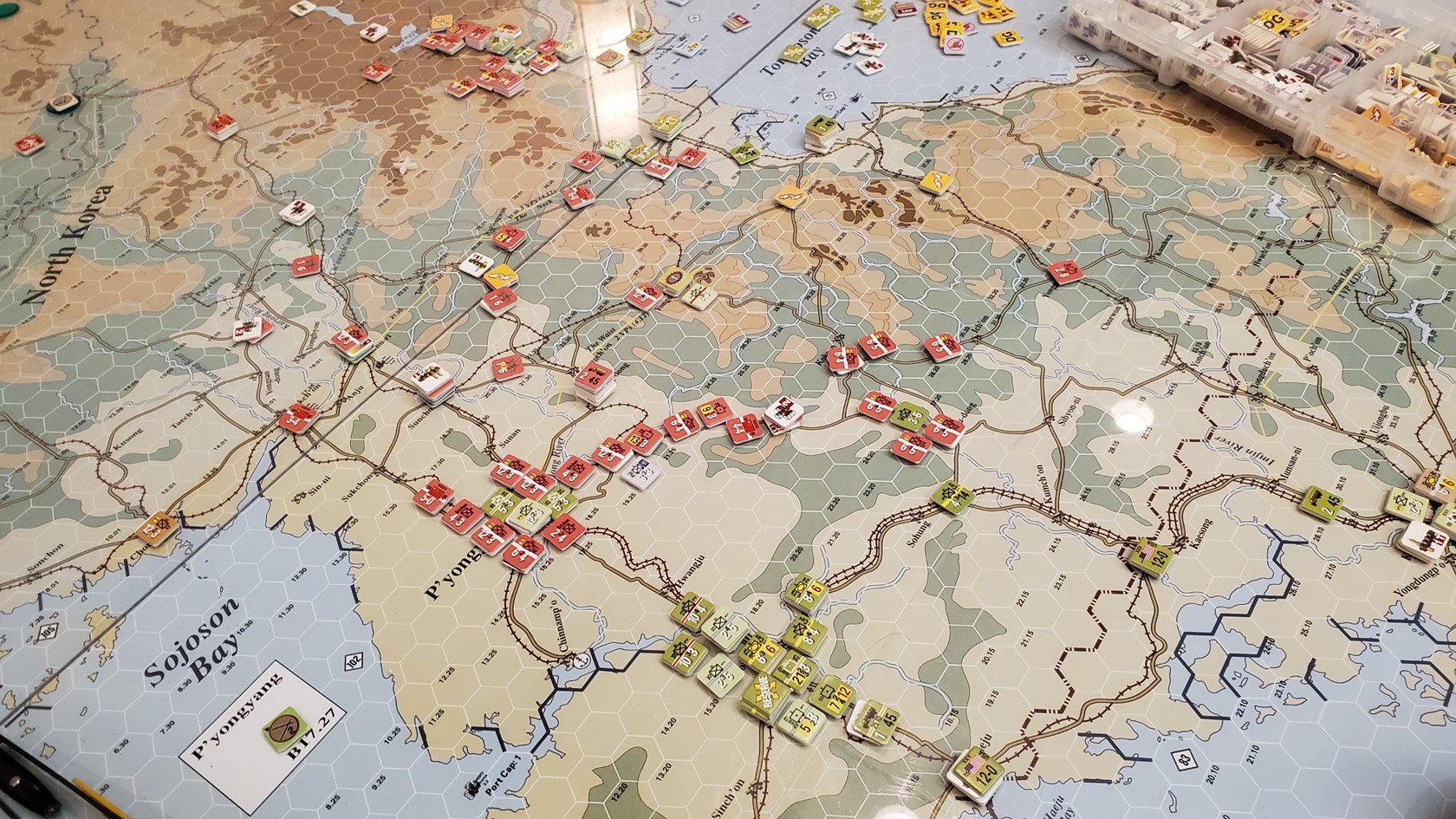
The Chinese pivot continues but even more aggressively! The US and Allies thought they had escaped the worst. But with this digression they now are looking at total isolation from Seoul if they do not move quickly!!
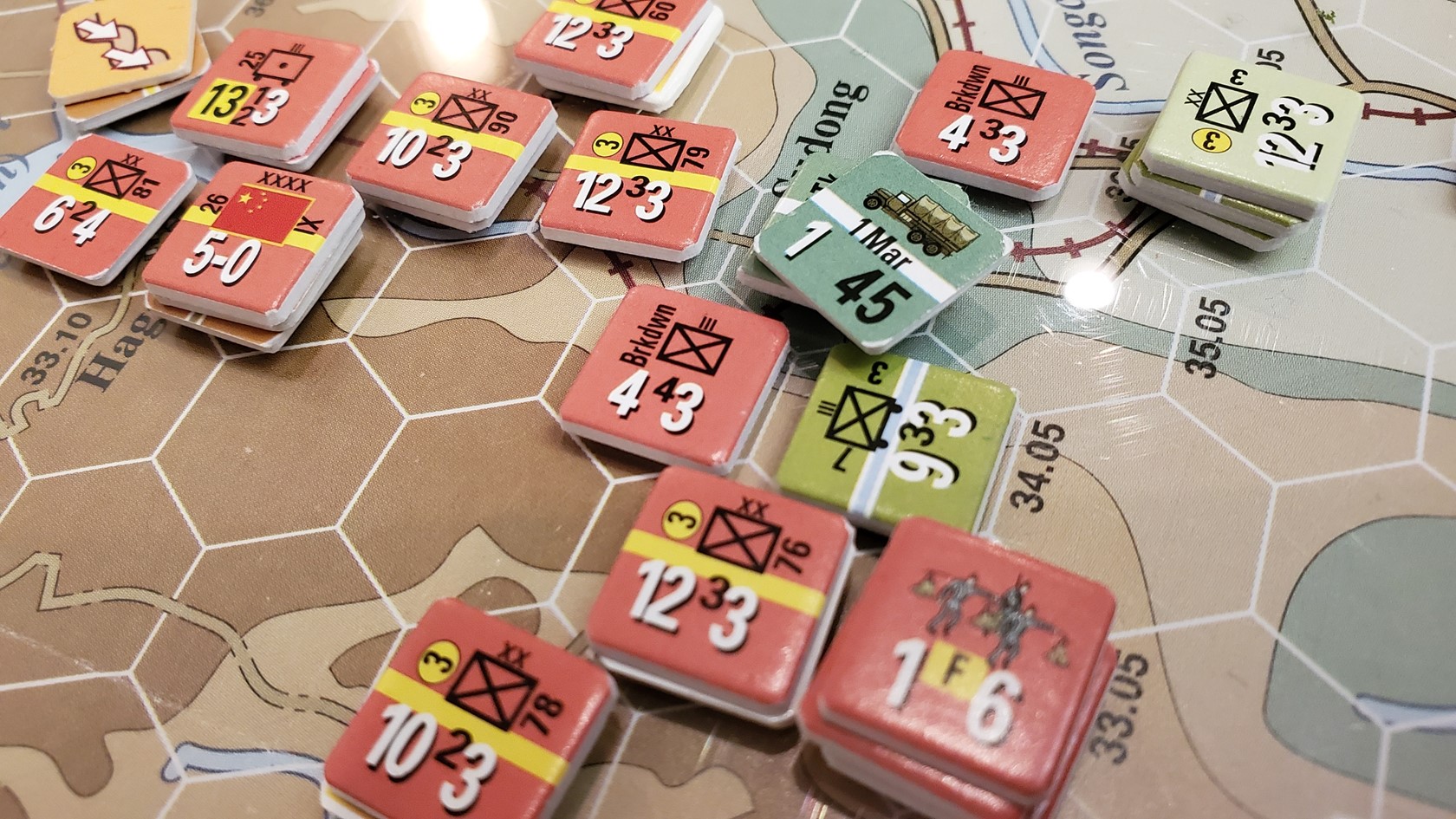
The Communists wrap up their exercise with the Chosin reservoir. The Chinese gamble on the Allies pull back fully, by threatening to encircle, even though it will cost 12-13 t to put everyone in supply, leaving no ammo for attack. But the US command does not know this, so once again they run and seek shipping of their best units out of the area to safety. With the loss of 2 elite Marine units they are nervous and a bit gun shy. As it is they almost lose their 1Mar support trucks.
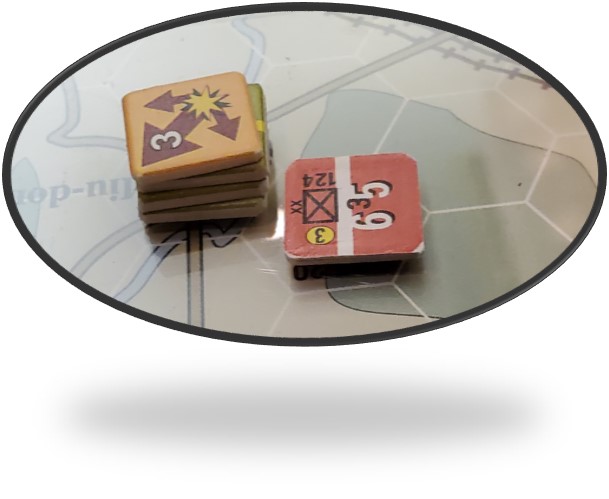
When the US wishes to….it carries a very big stick!
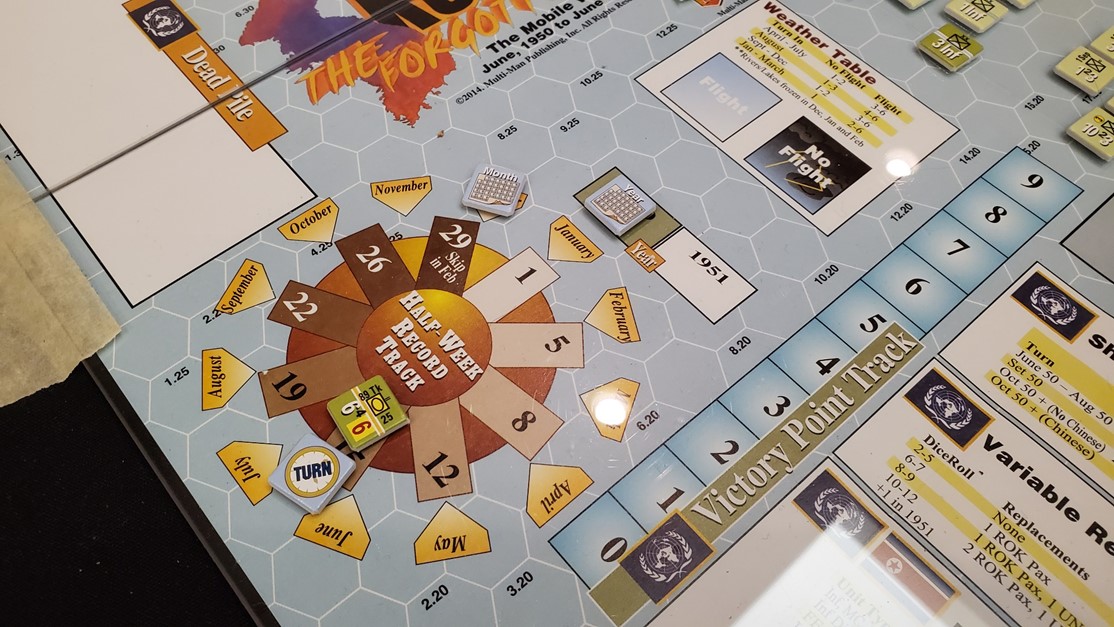
By the end of December 15th the Chosin area is cleared and we have the US in full retreat to the and through the Neck. With some forces shipping out in haste to ports further south.
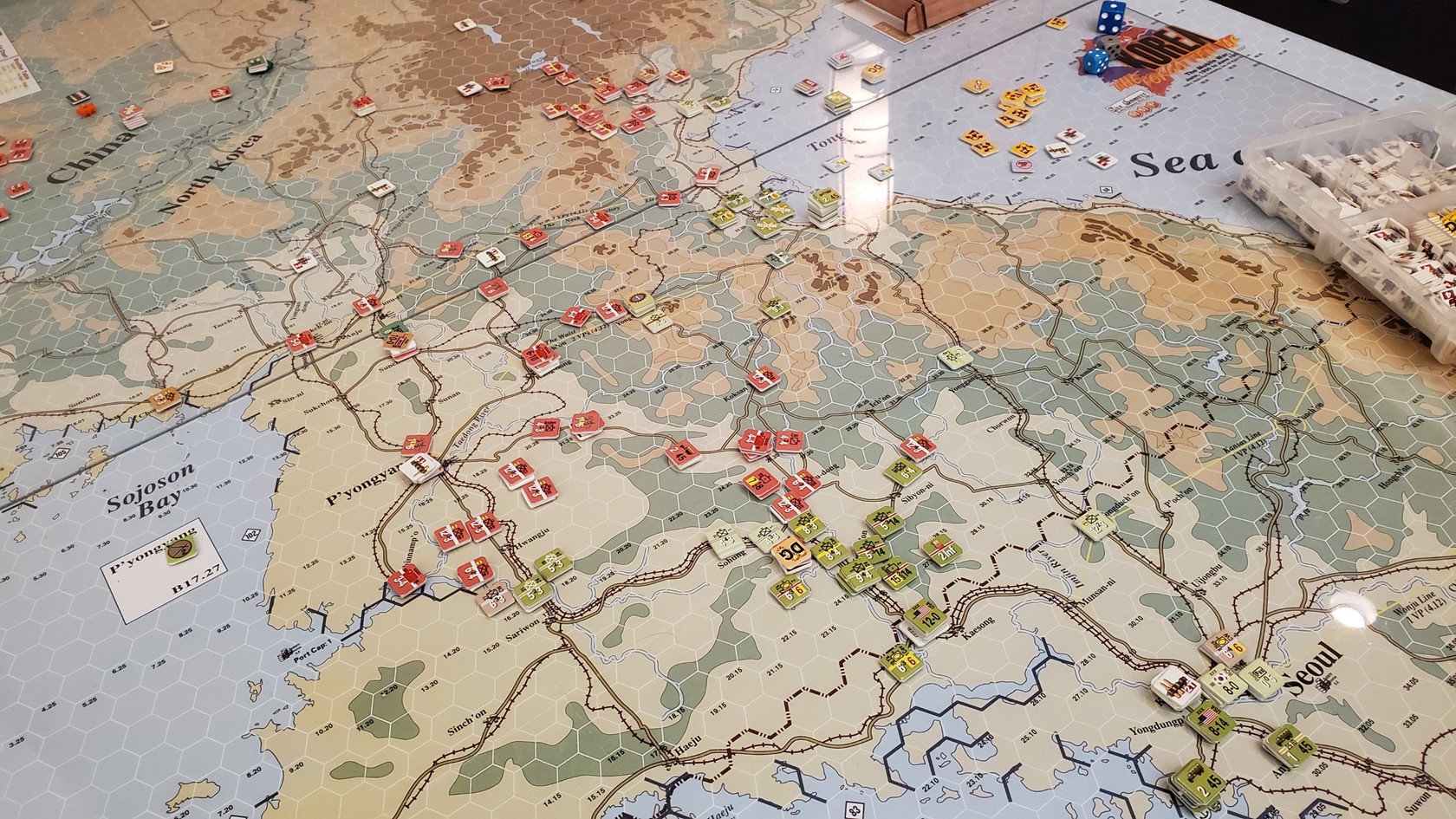
The units at ‘The Neck’ have to use the port for supply as the rail line along the Eastern Coast ends halfway down the map. They do have Trace supply to Seoul as well but that is under threat also.
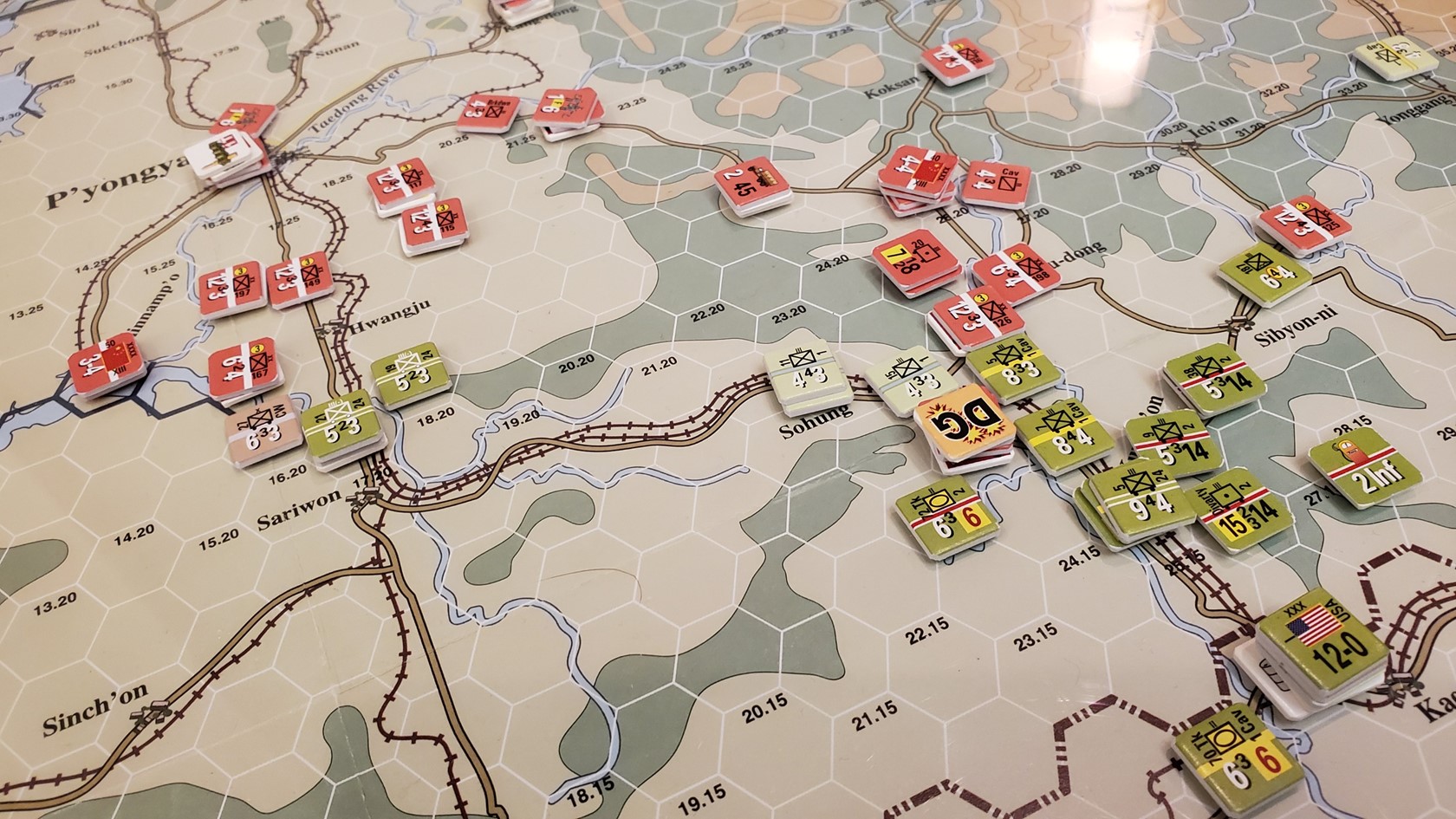
The Allies abandon P’yongyang quickly and head further South as once again the Chinese divert at an angle and clear roads that will allow isolation of forces if the Allies do not fall back.
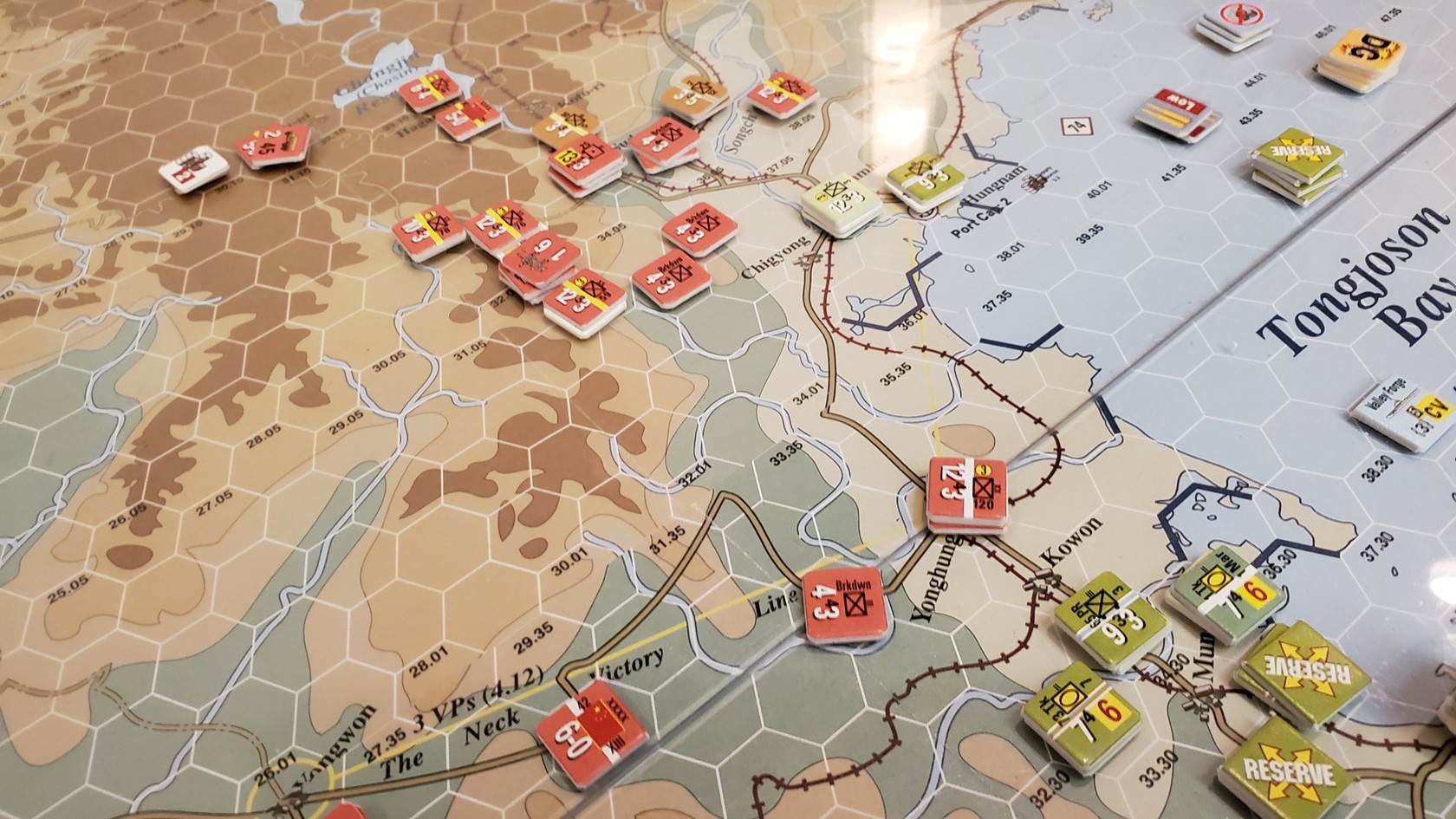
The Tongjoson Bay force is resilient at ‘The Neck’ and will potentially pose a real problem if we are not careful. So far the psychology of the defender has been limited careful staged counter attacks. But no large scale effective counter attacks on a broad basis. Part of this I hope is my ability to keep him a bit off balance and threatening his supply lines. Such that he has to attack single regiments to regain Trace Supply.
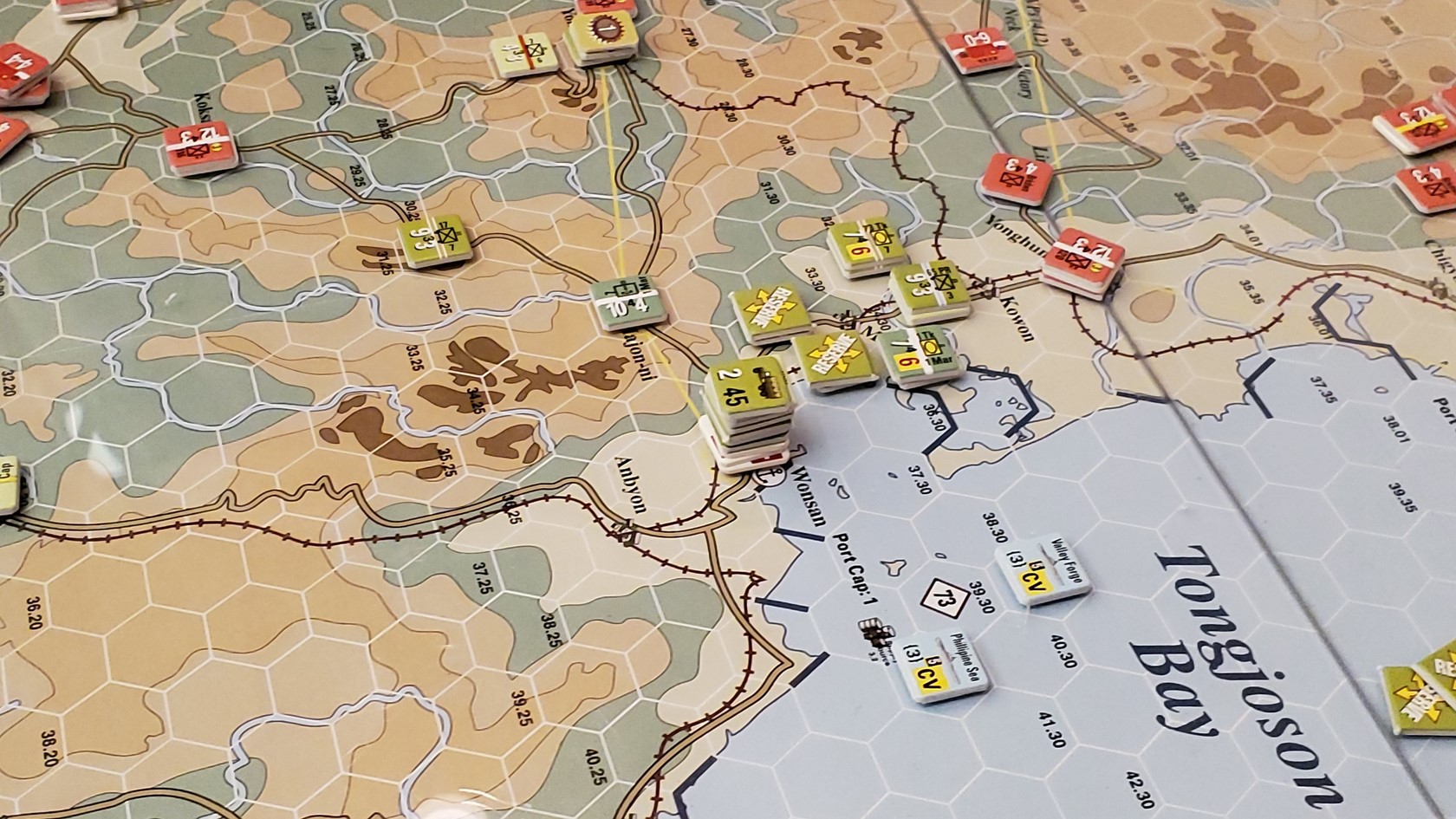
Quiet a strong force sit here. But the Allies are reluctant to risk major counter attacks or supply cut offs yet. Nor are the Chinese able to be everywhere at once. So they elect to screen them for now.
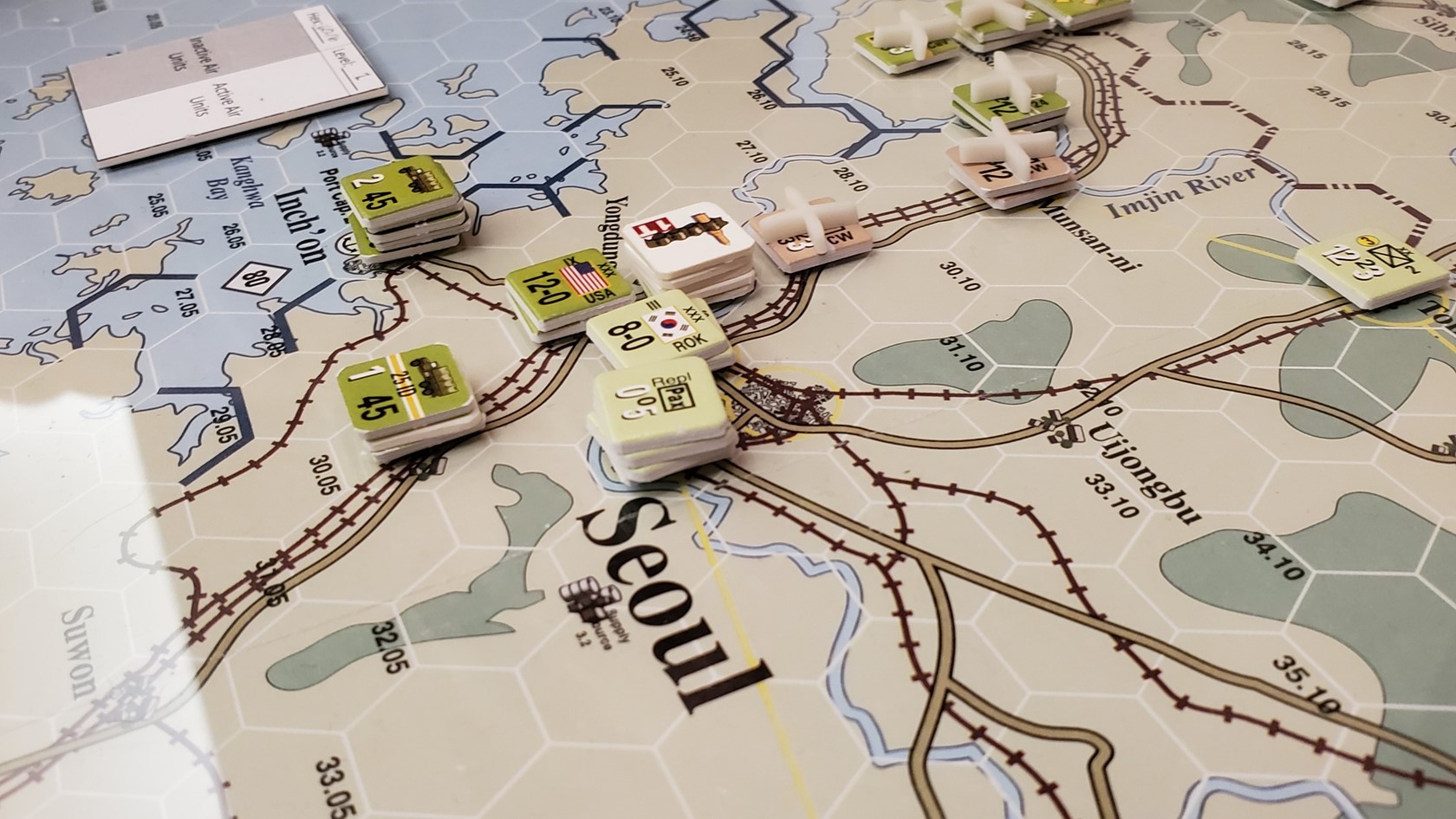
Seoul or bust… well indeed. But can the Chinese mount an effective offense with forces strung along the roads?
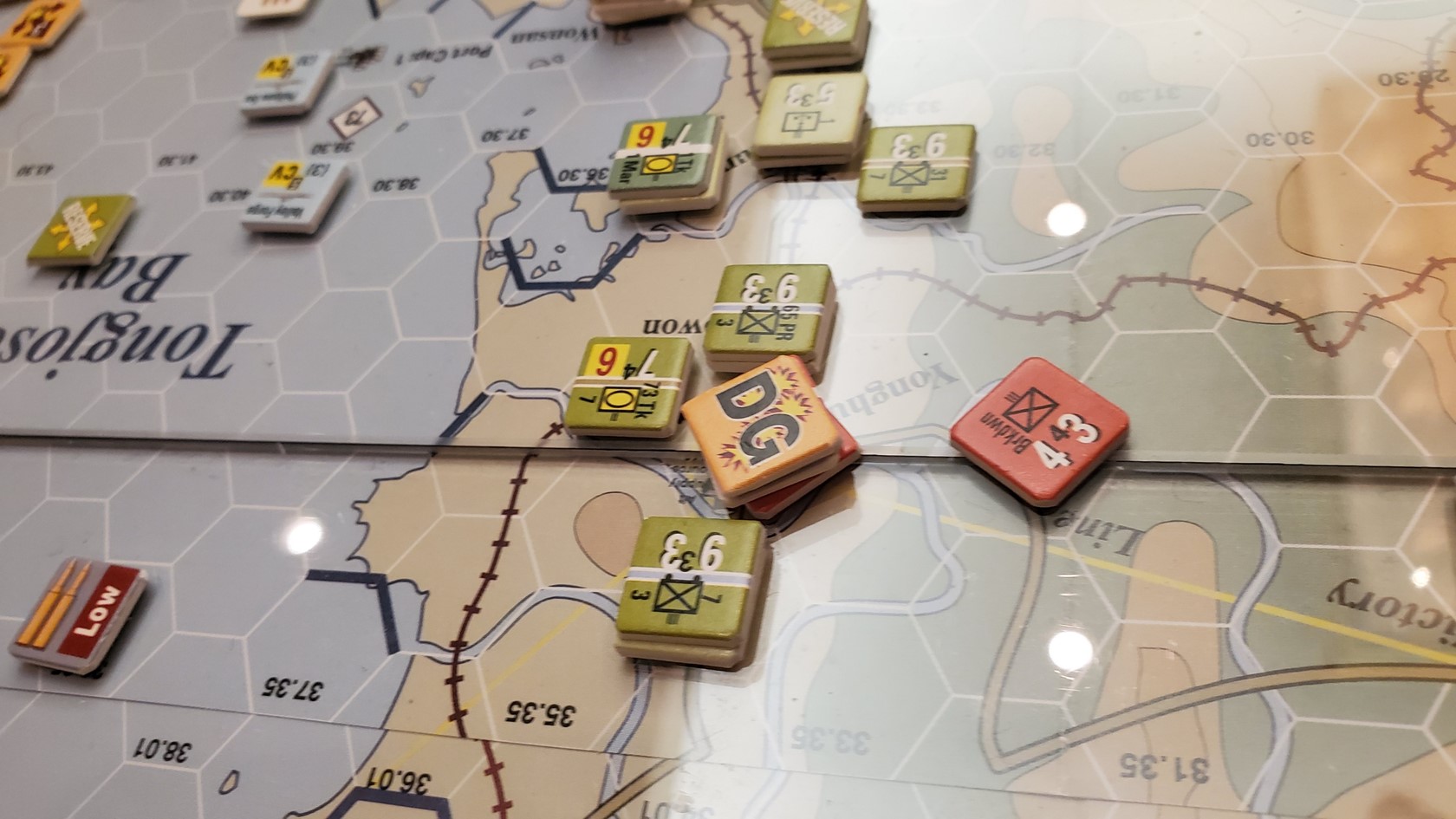
The Eastern Neck of Korea, see very effective counter attacking by the US forces. While it is ok to take losses, we do not want to throw steps away. But in this case, slowing and blocking off avenues was well worth it. The US pounces on lone regiments.
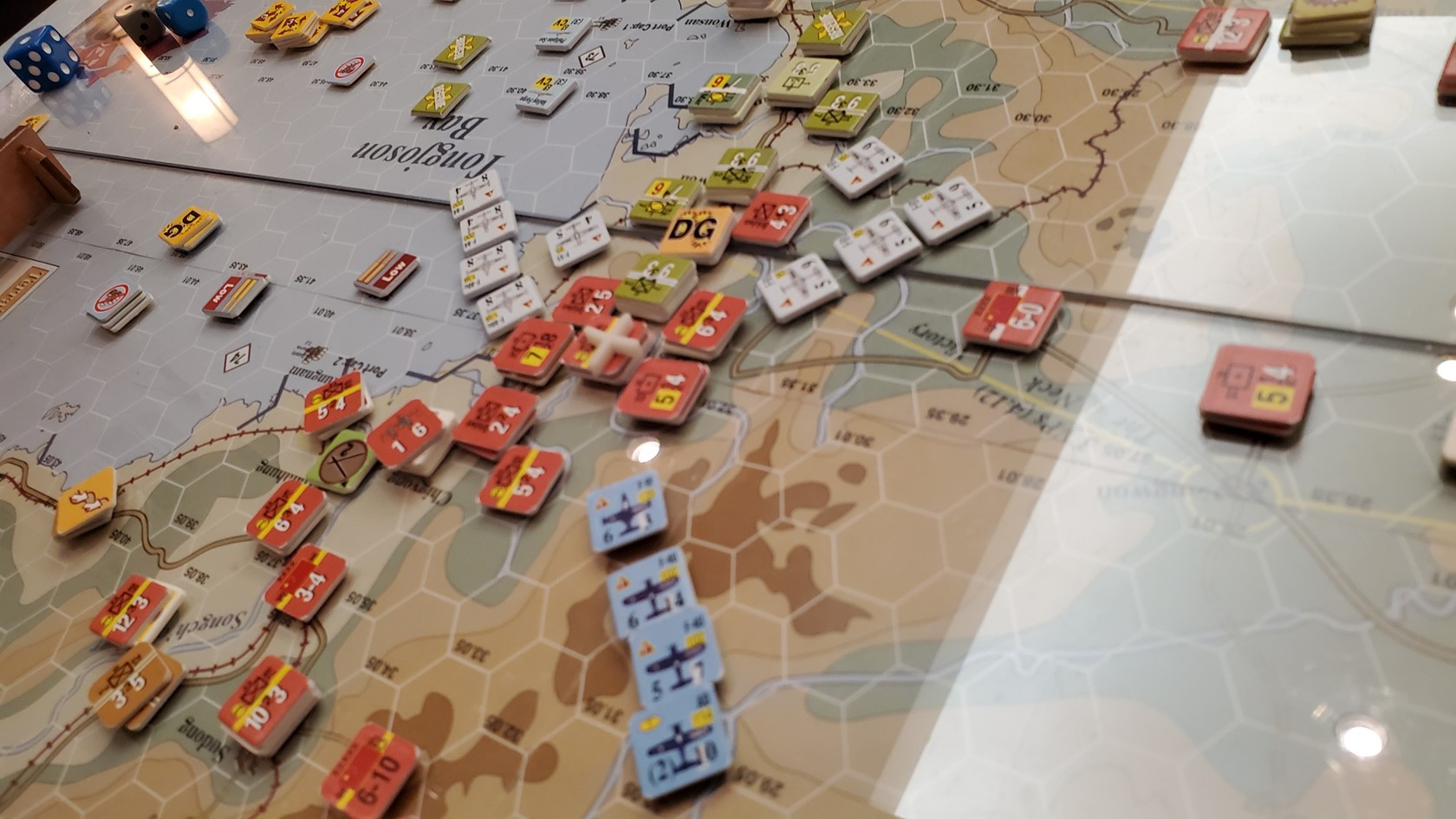
As we draw to a close the US go all out to stop the attacks so he can sneak that stack out. These air raids yielded several DG’s and enough carnage to blunt my desire to attack at all. It was an awesome display of overwhelming firepower.
The US and Allies are hamstrung with very limited forces, who while high quality are brittle. The US cannot really stack effectively with South Korean larger, weaker AR units that are multi step, so its always a hope that any Communist attack is not a DL1 result.
What will the Chinese need to do to isolate and break the Allied forces?
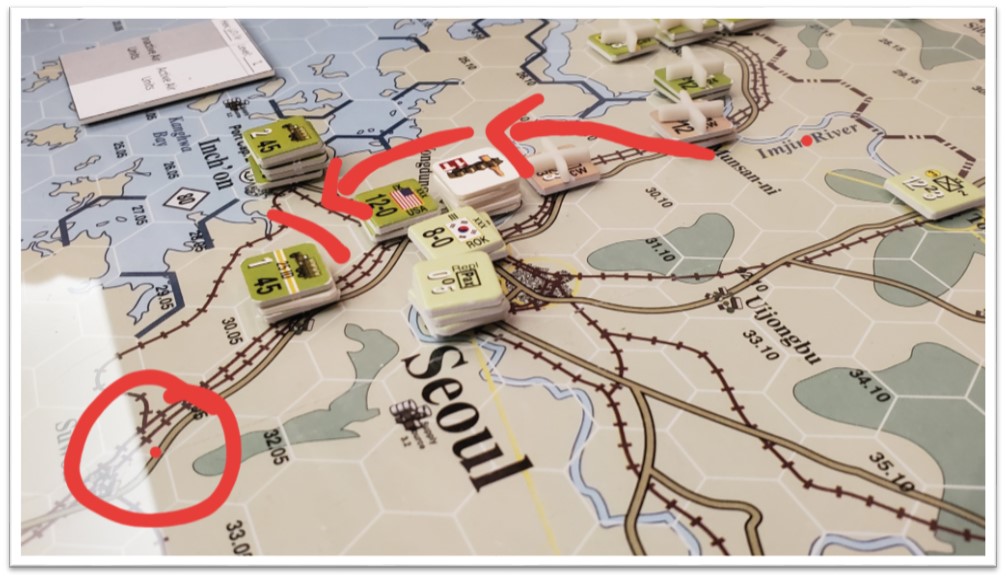
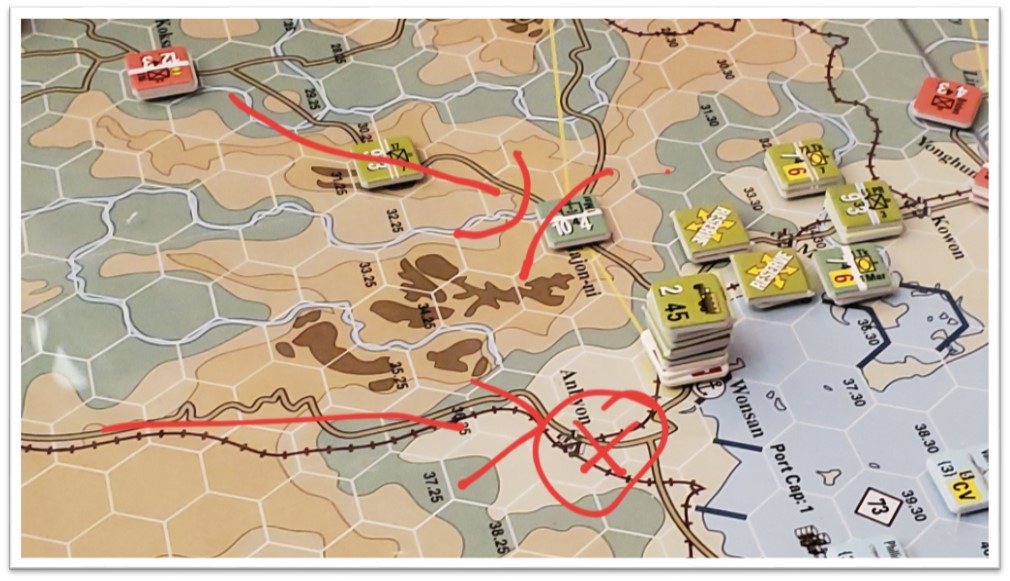
These two images show my ultimate goals for the advance in the near term. If we can secure these hexes we can isolate the Allies.
But challenges remain in achieving this, it will take a few turns to consolidate units, and move SP forward for the Assault on Seoul. OR would it be better to drop further back? The problem is the UN brings almost NO reinforcements on the board. To date very little has been rebuilt due to poor replacement rolls. The US/UN force is down to two pockets one around Seoul and another on the far coast, which has limited options. But with enough air support they could press into the flank of the CCF advance to slow us.
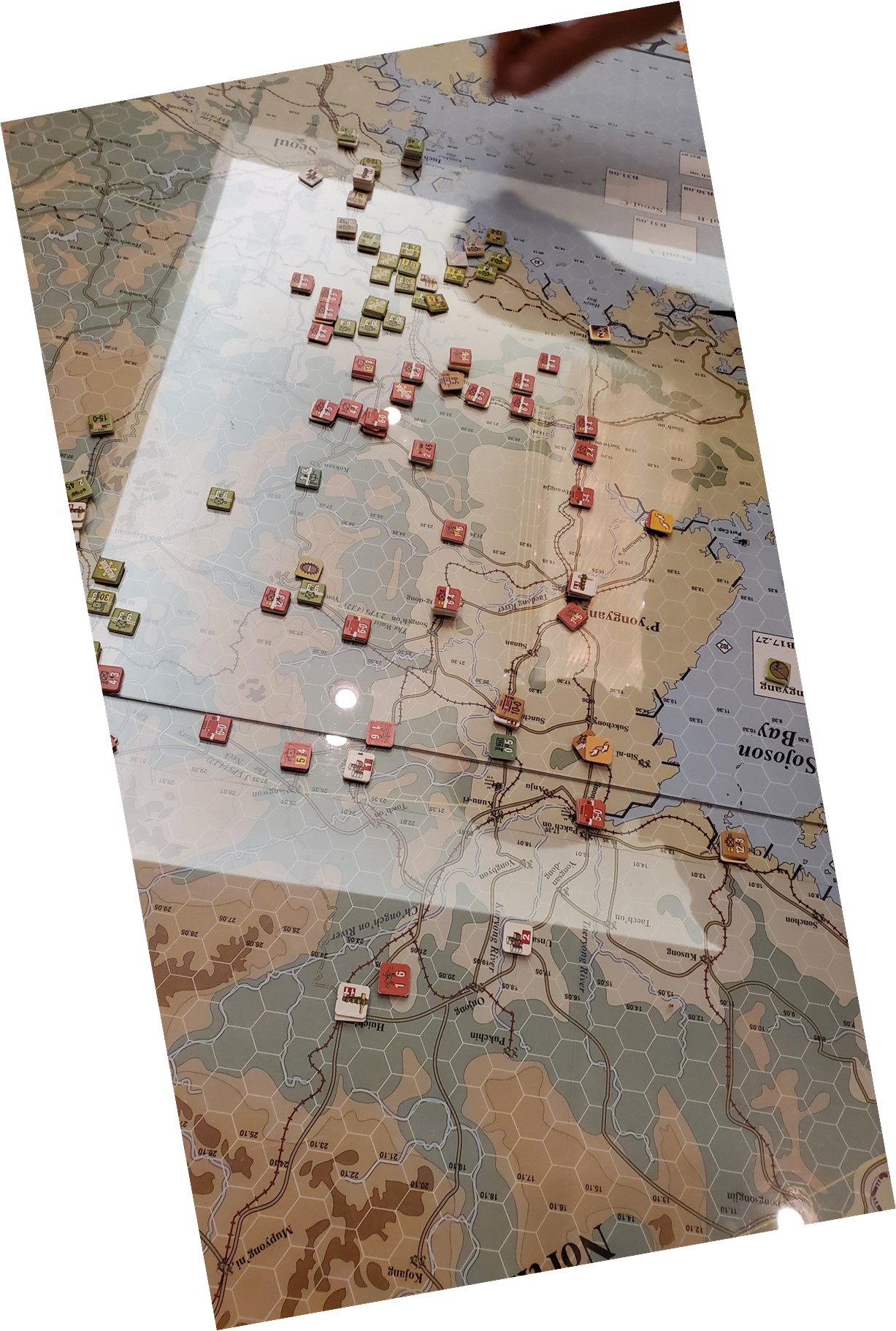
We call it at the end of the 7th turn. Above is the end state as we were packing up.
At this point we are mentally done. About 12 hours in with modest brief breaks.
The situation is interesting for both sides. With rivers still frozen the Chi-Comms have a clear run across most terrain and it makes it hard for the Allies to find a way to build a solid line or a line that will allow them time in the rear to prepares defenses.
In the picture above, a decent Allied force sits on the “Neck” of the Peninsula to the left. That force has some punch. The Chinese would need to screen the two approach avenues with a hedge hogged unit or two. The Allied player had serious thoughts about a counter attack there so our plan made sense. The CCF also need to place enough units along the Western shore at key areas to prevent another ‘Inchon’.
What cannot be seen is the depth of attrition of the forces of the Chinese. As discussed above the attack at almost any cost and loss ratio while successful, had slowed our ability to be effective. In the longer game [this is a 60+ turn scenario], a pause in the next 5 turns would be a reasonable thing to do. At the very least we would want to consolidate 4 rated units and keep making probing attacks around Seoul area, while building a supply cache or two and rebuilding Chinese and NORK units. Then with another major push we would want to isolate Seoul and destroy the army in its entirety if possible to avoid the long race to Pusan.
This was good fun!
Exciting account, and I promised myself I was not going to buy another new game for 3 or 4 months!